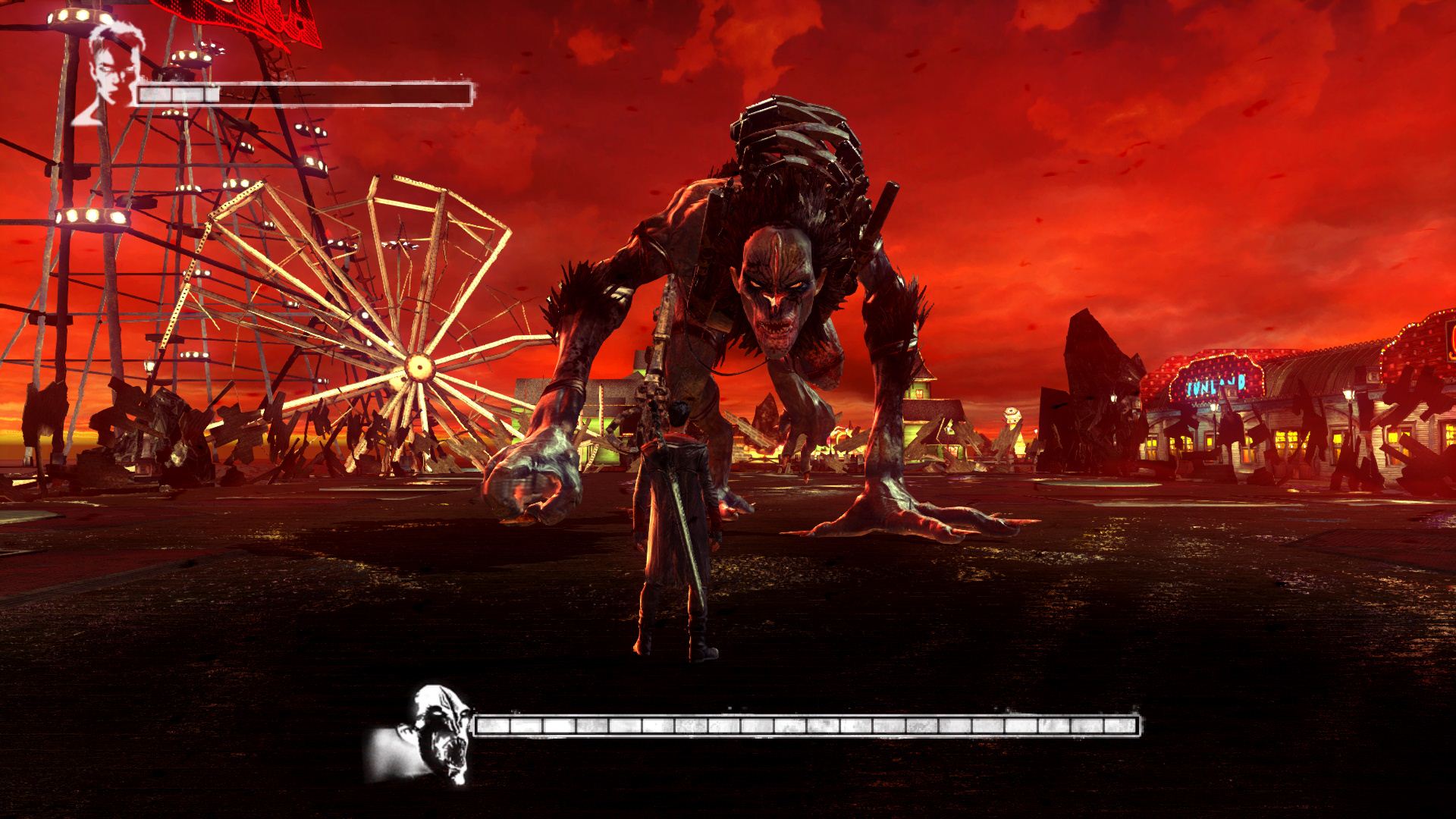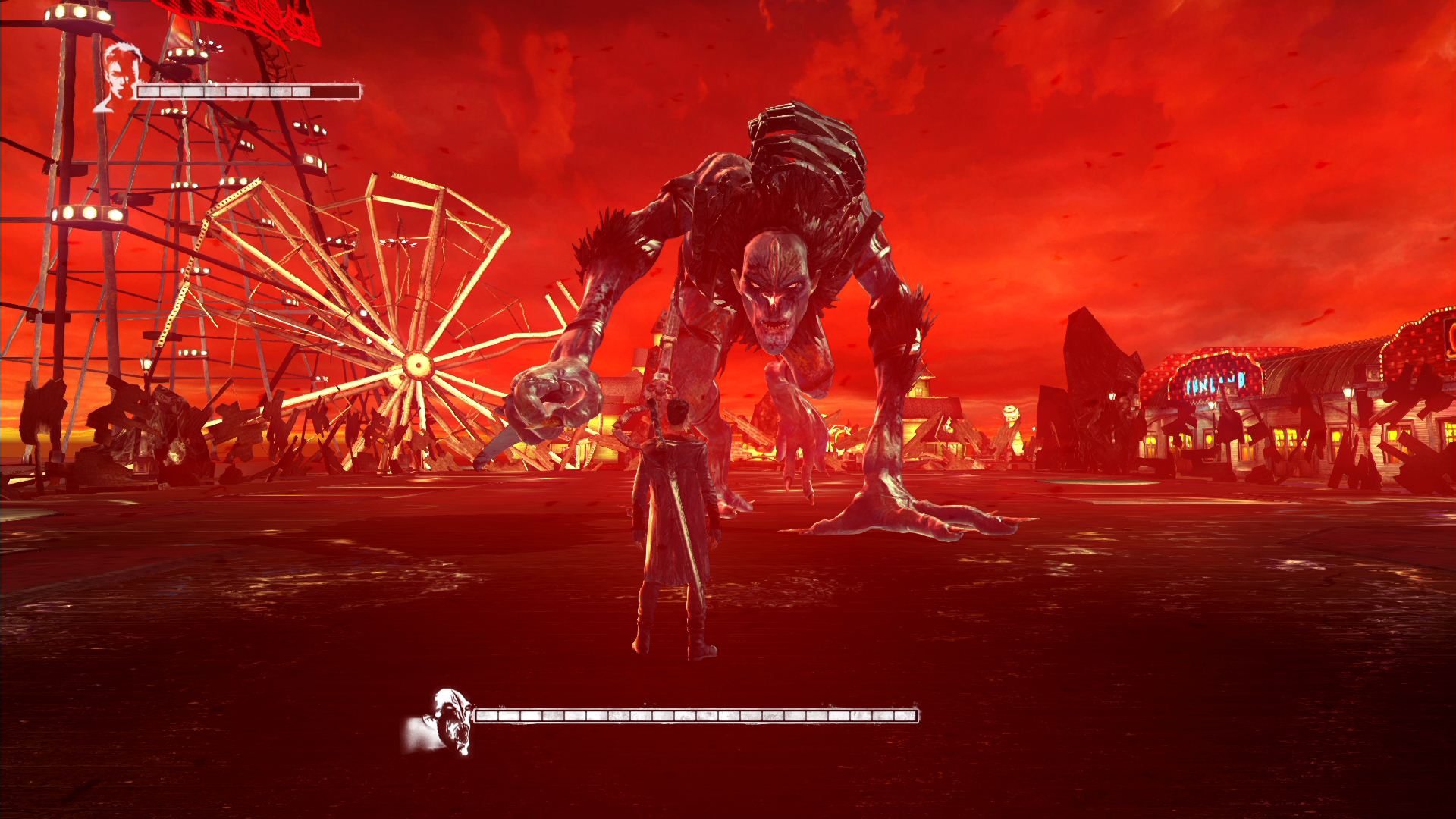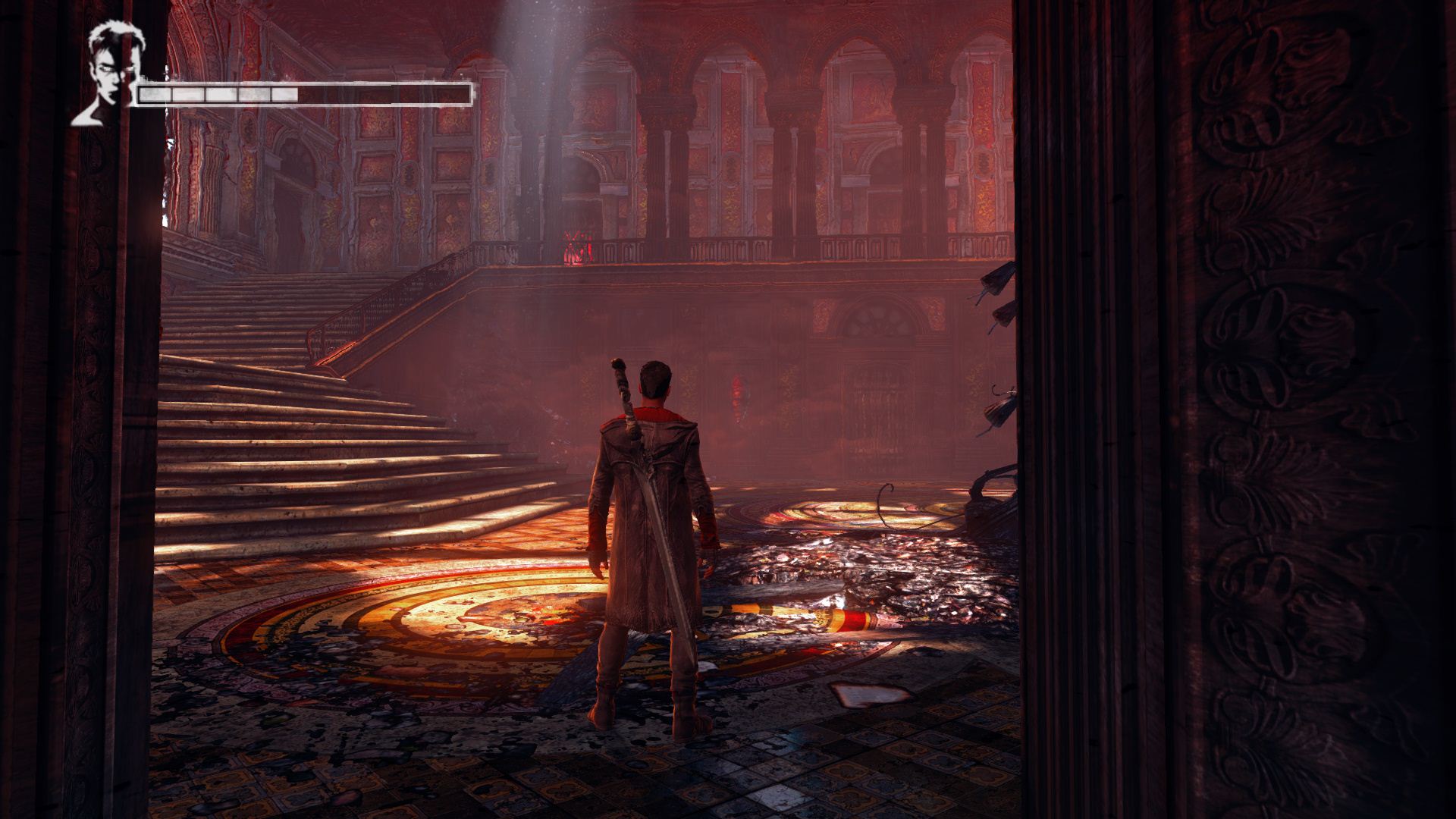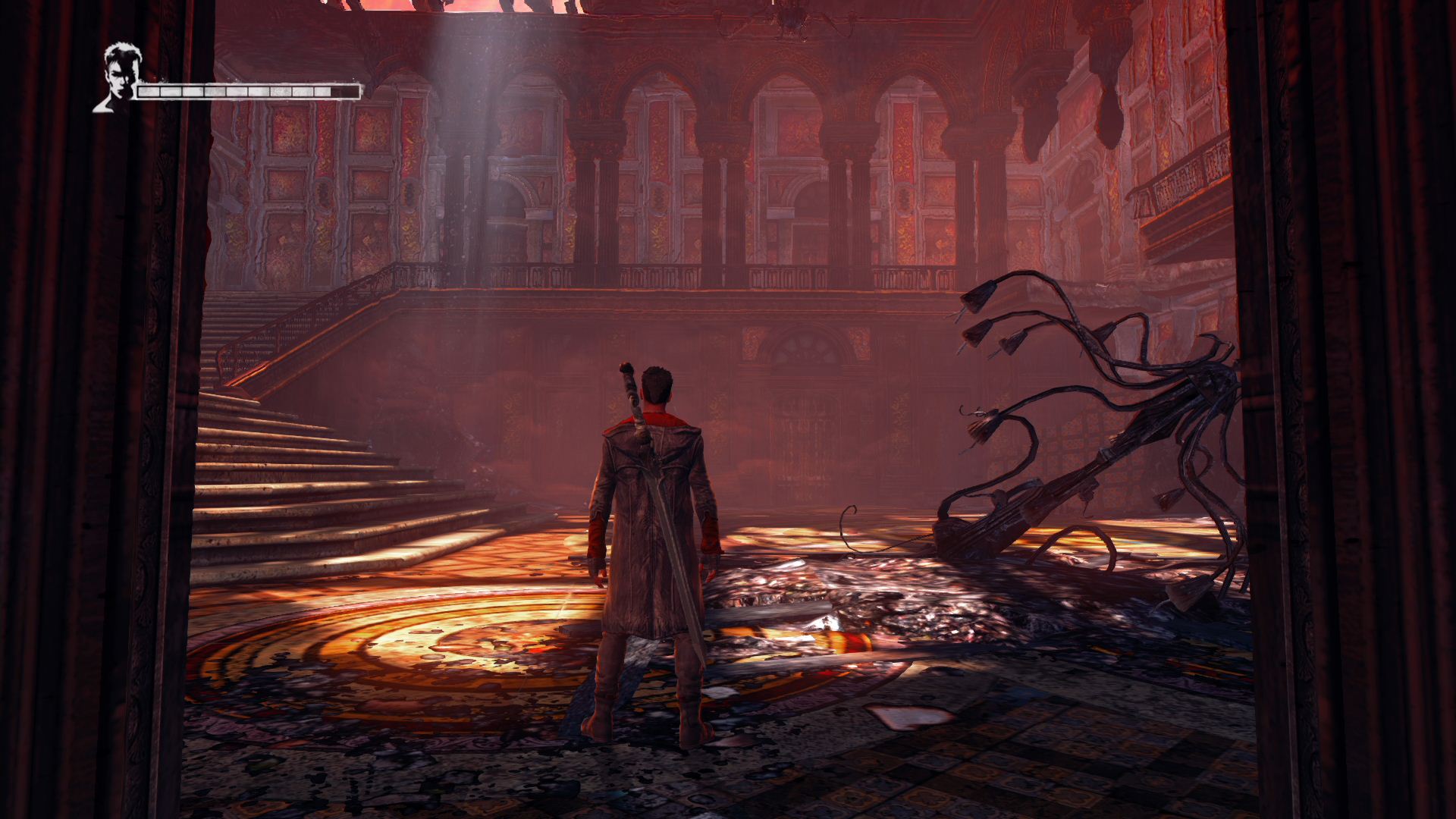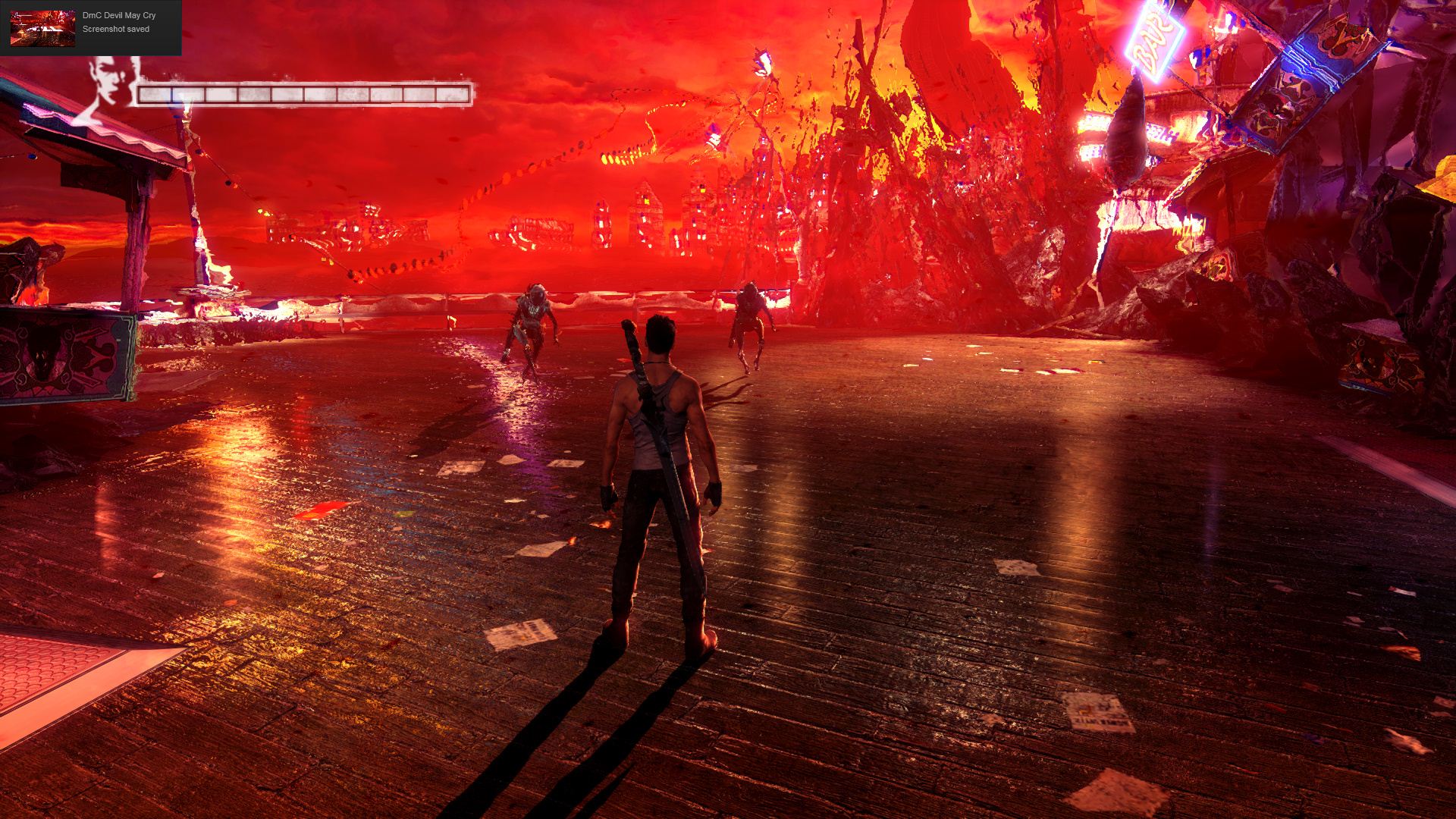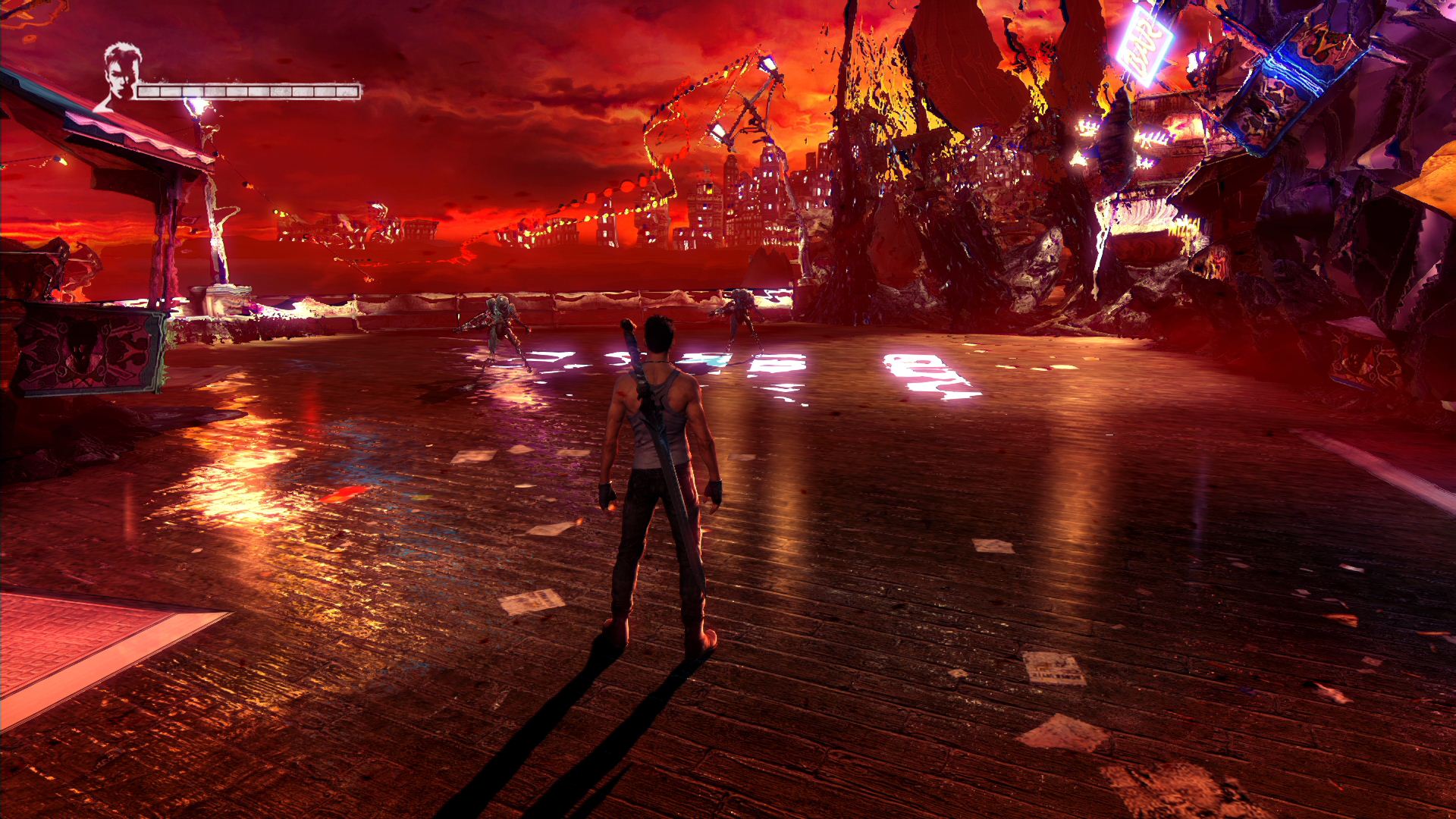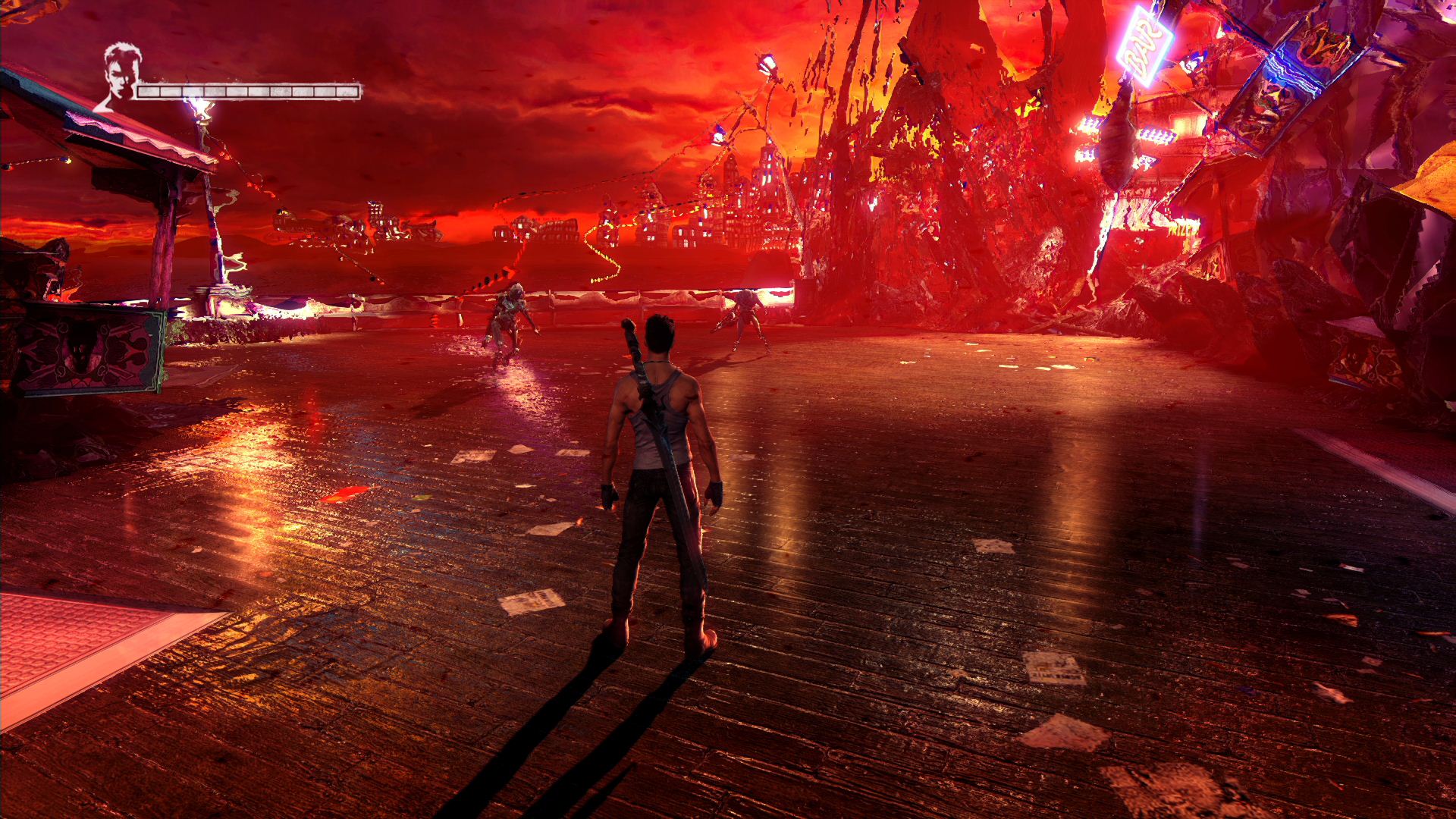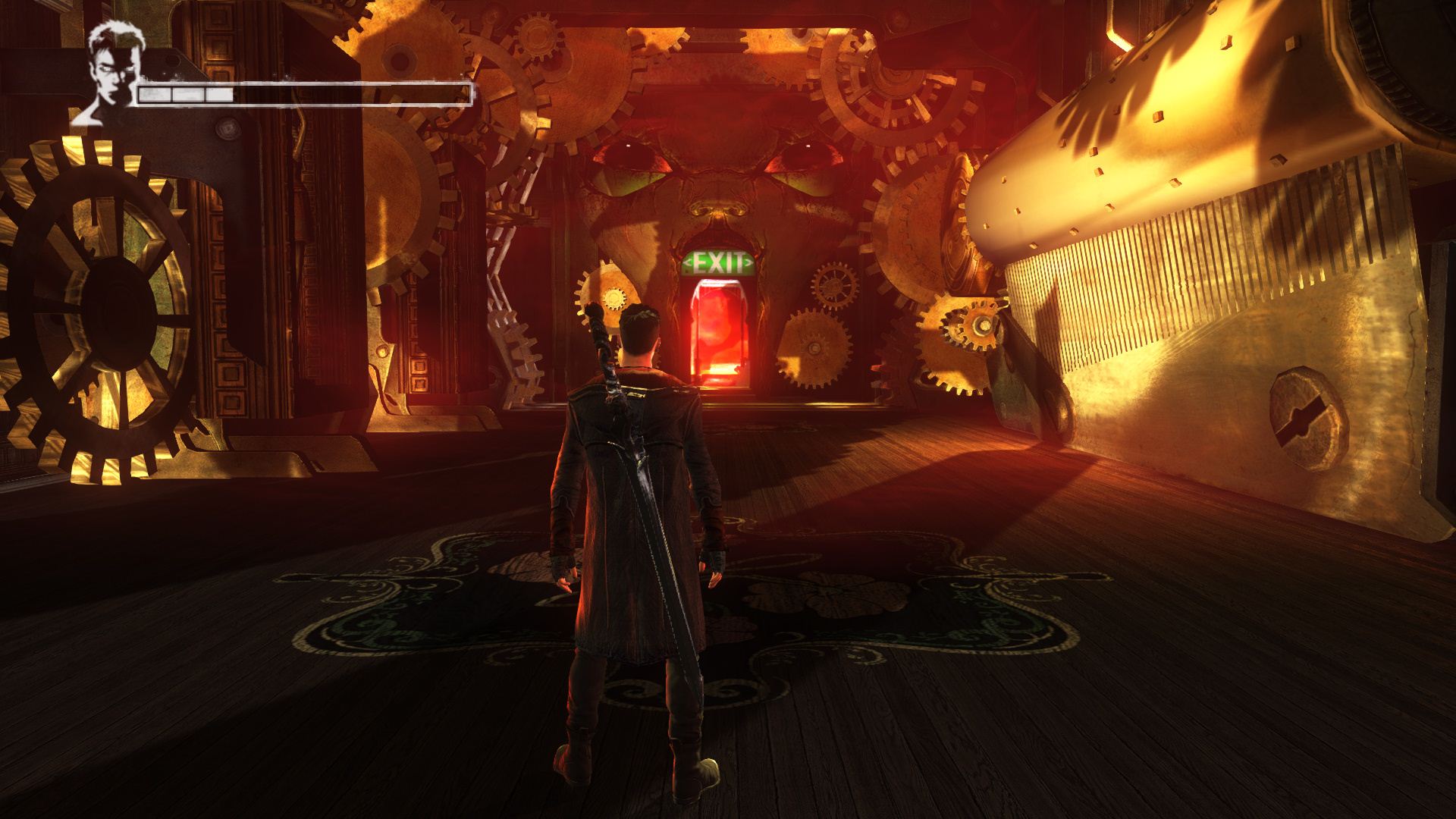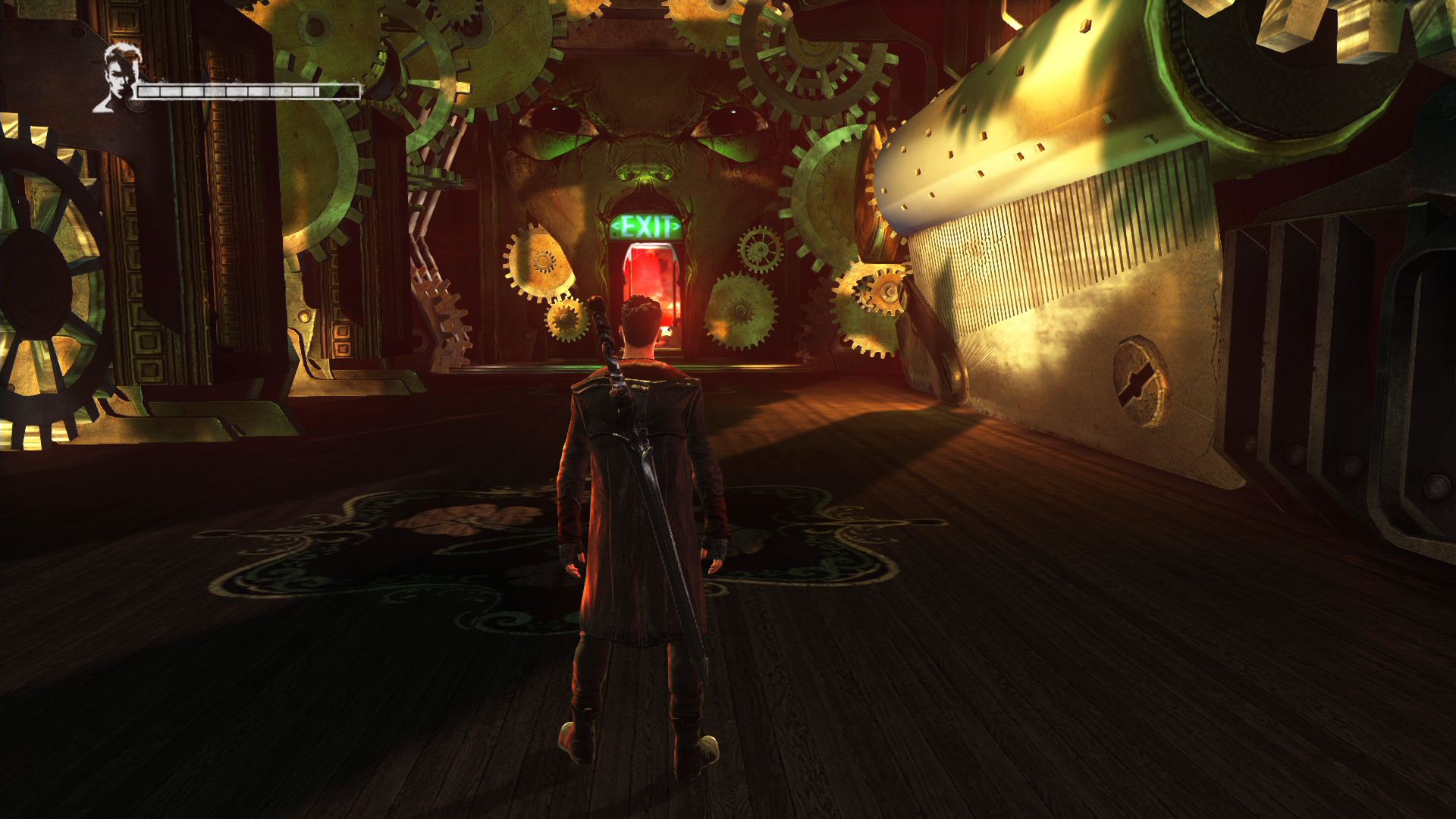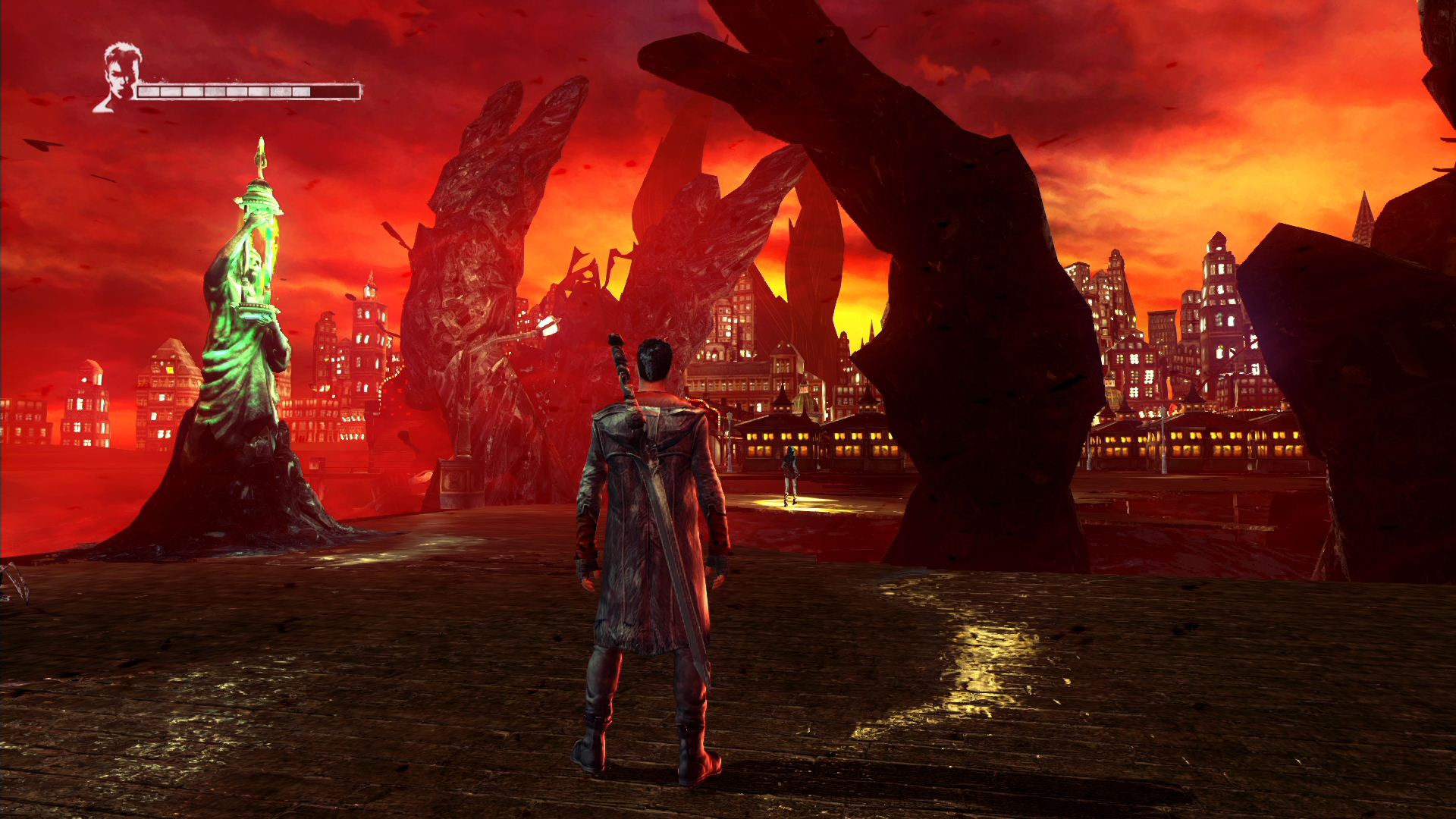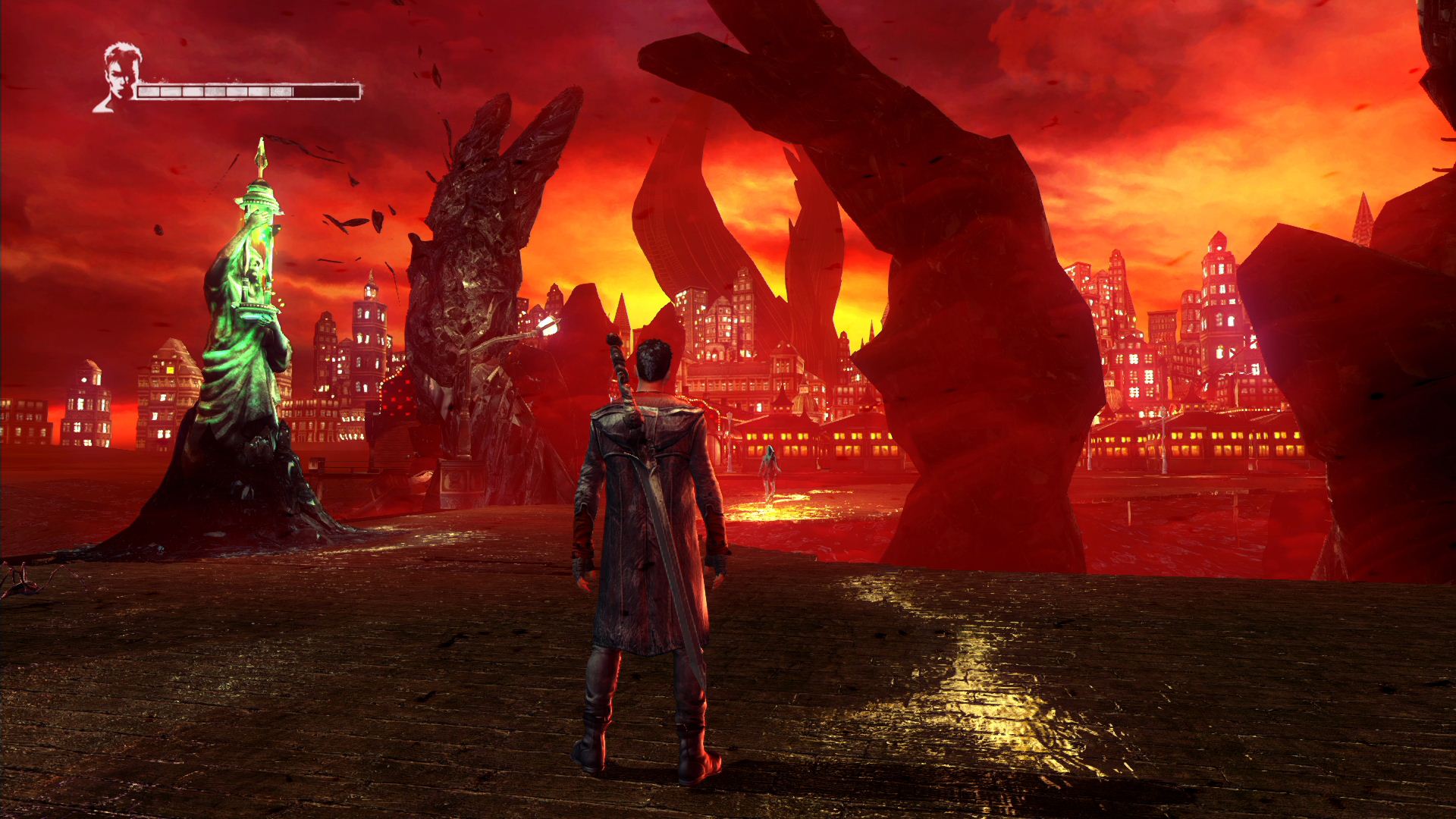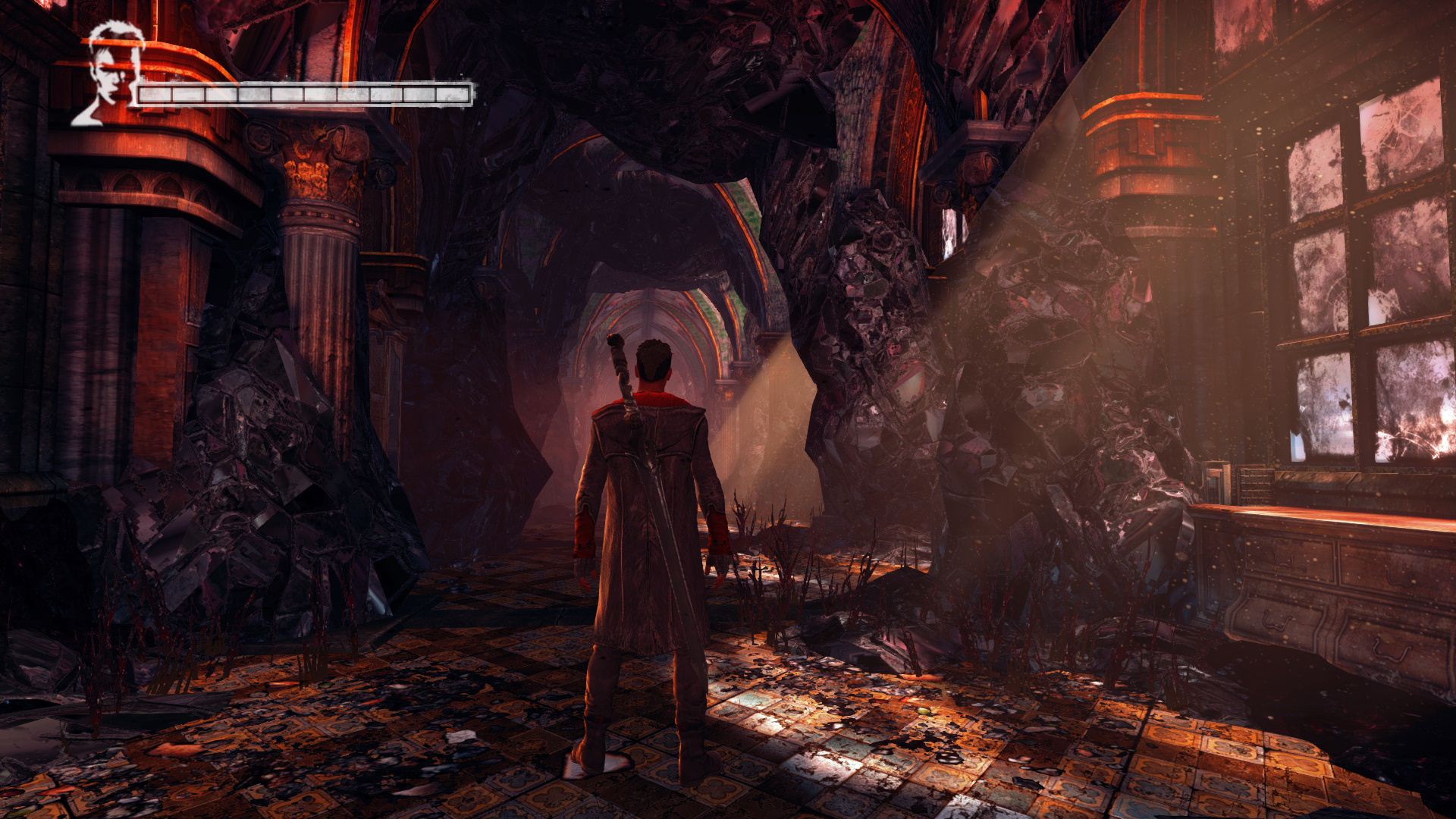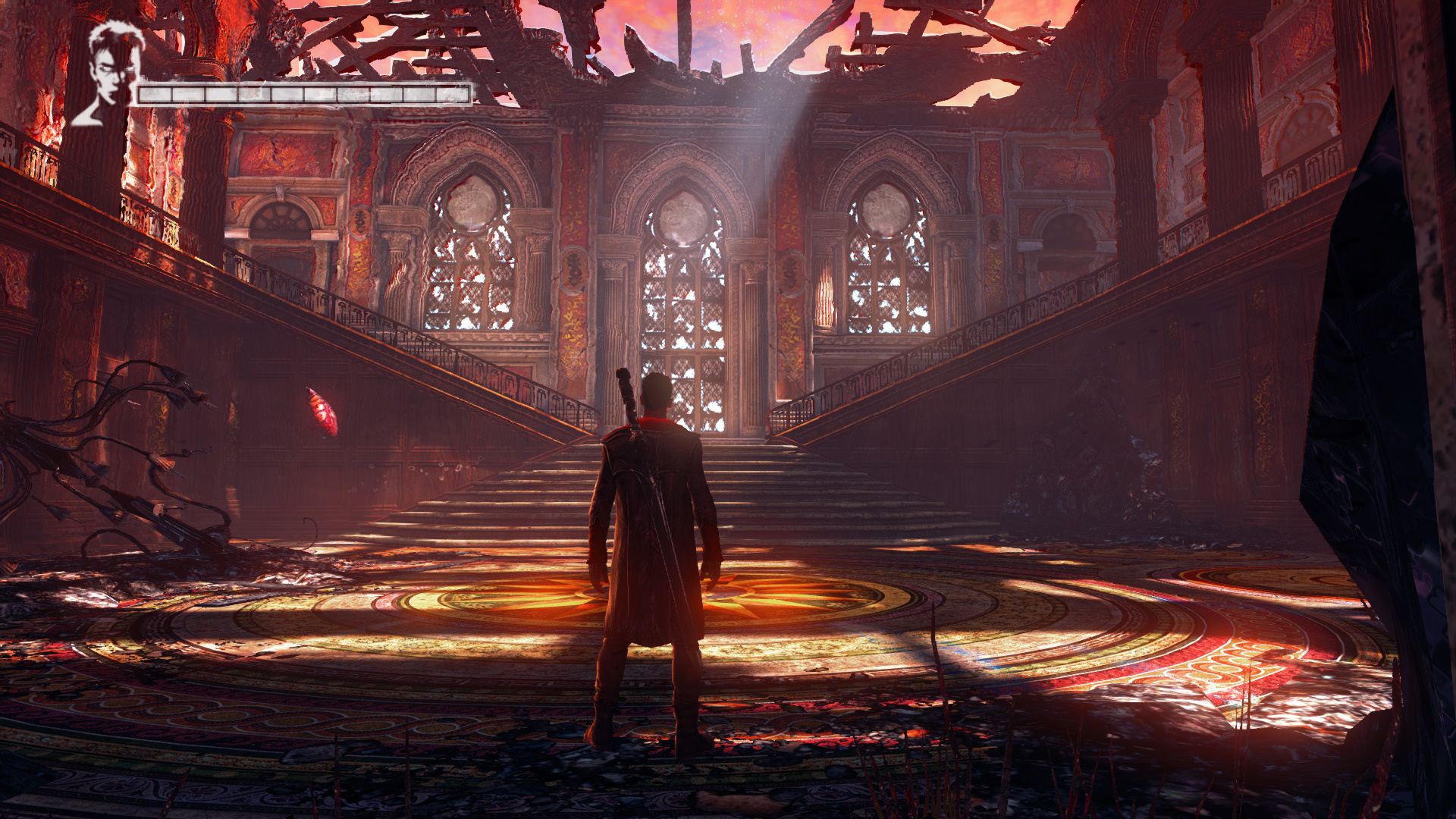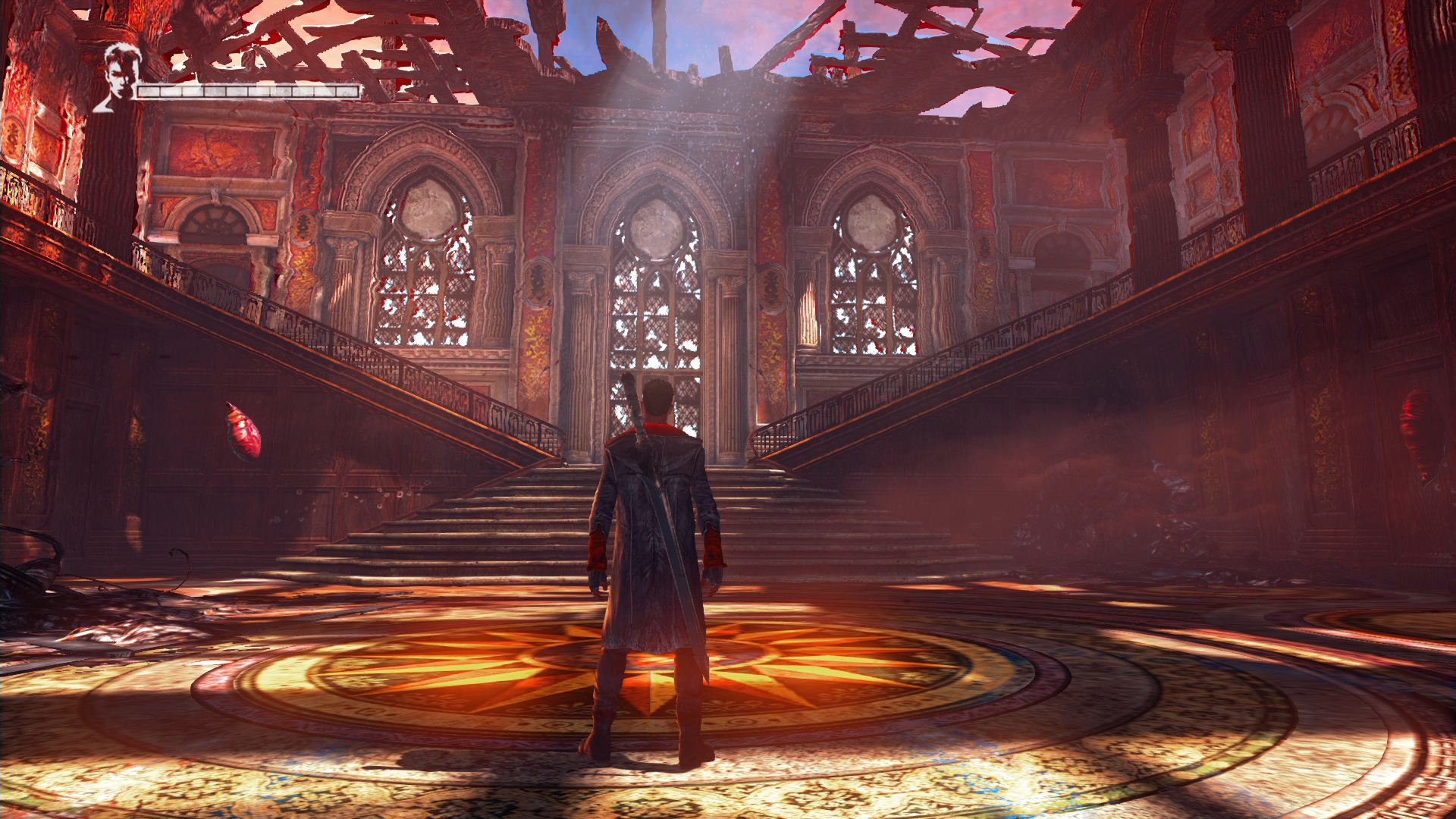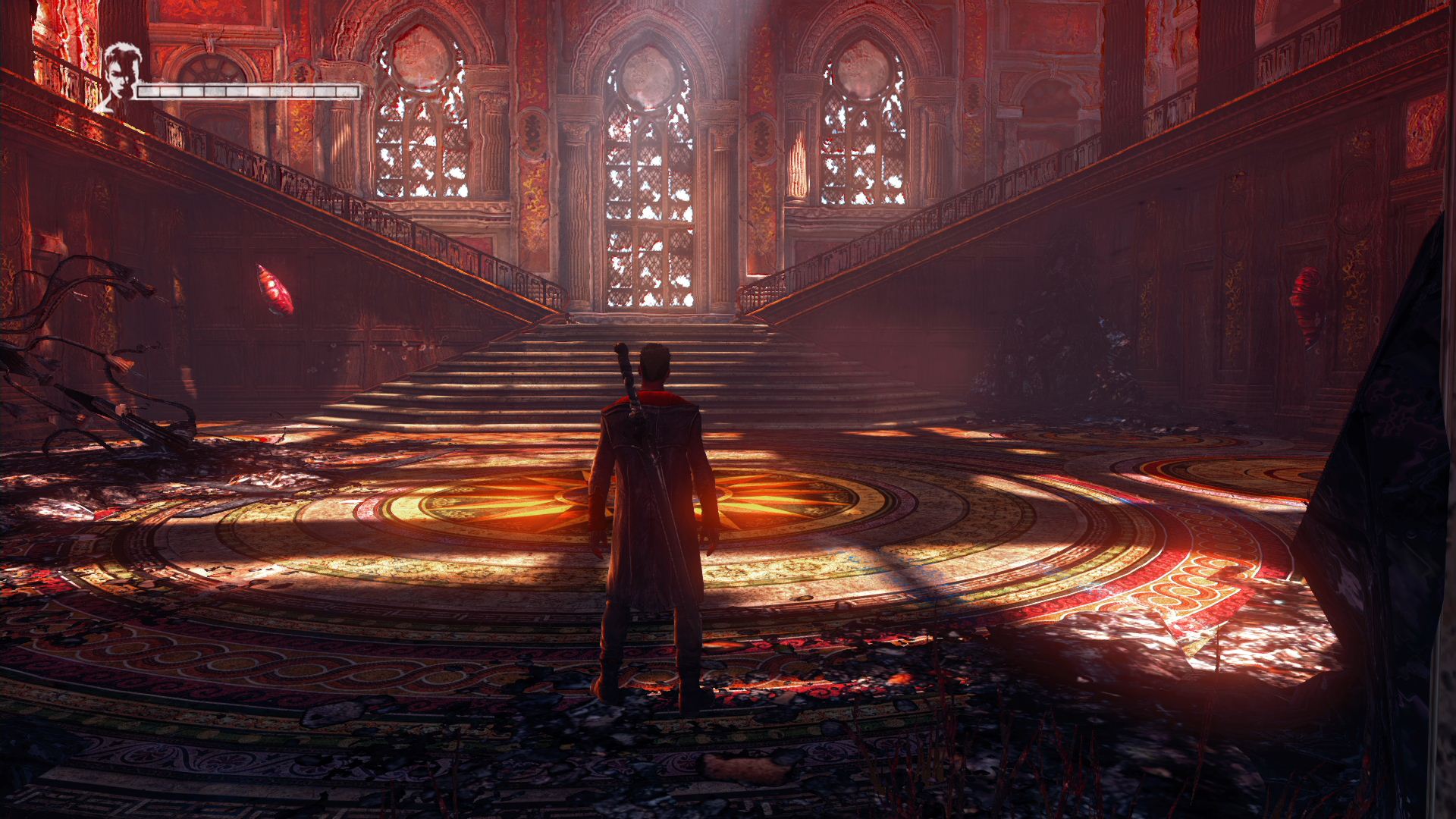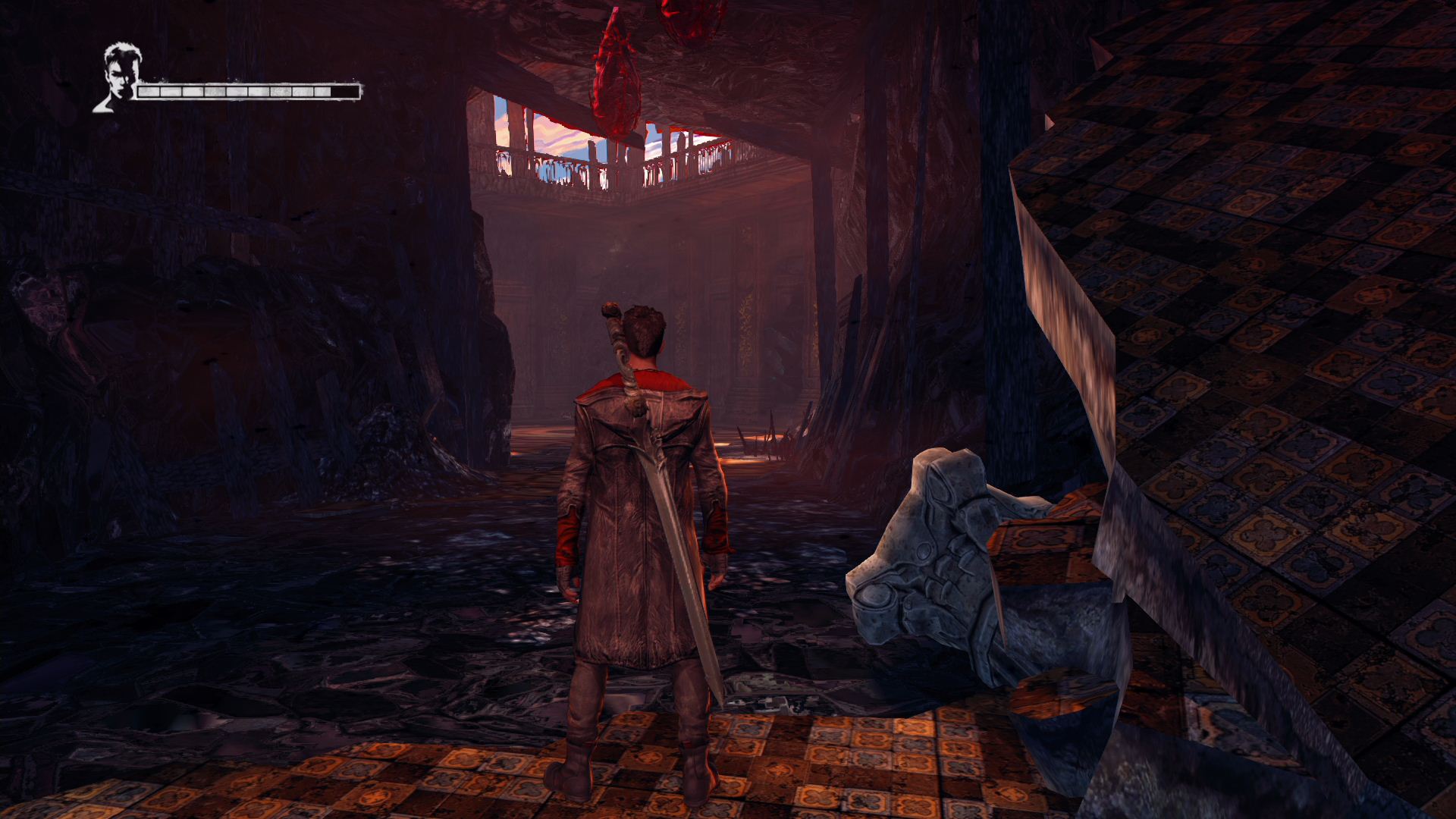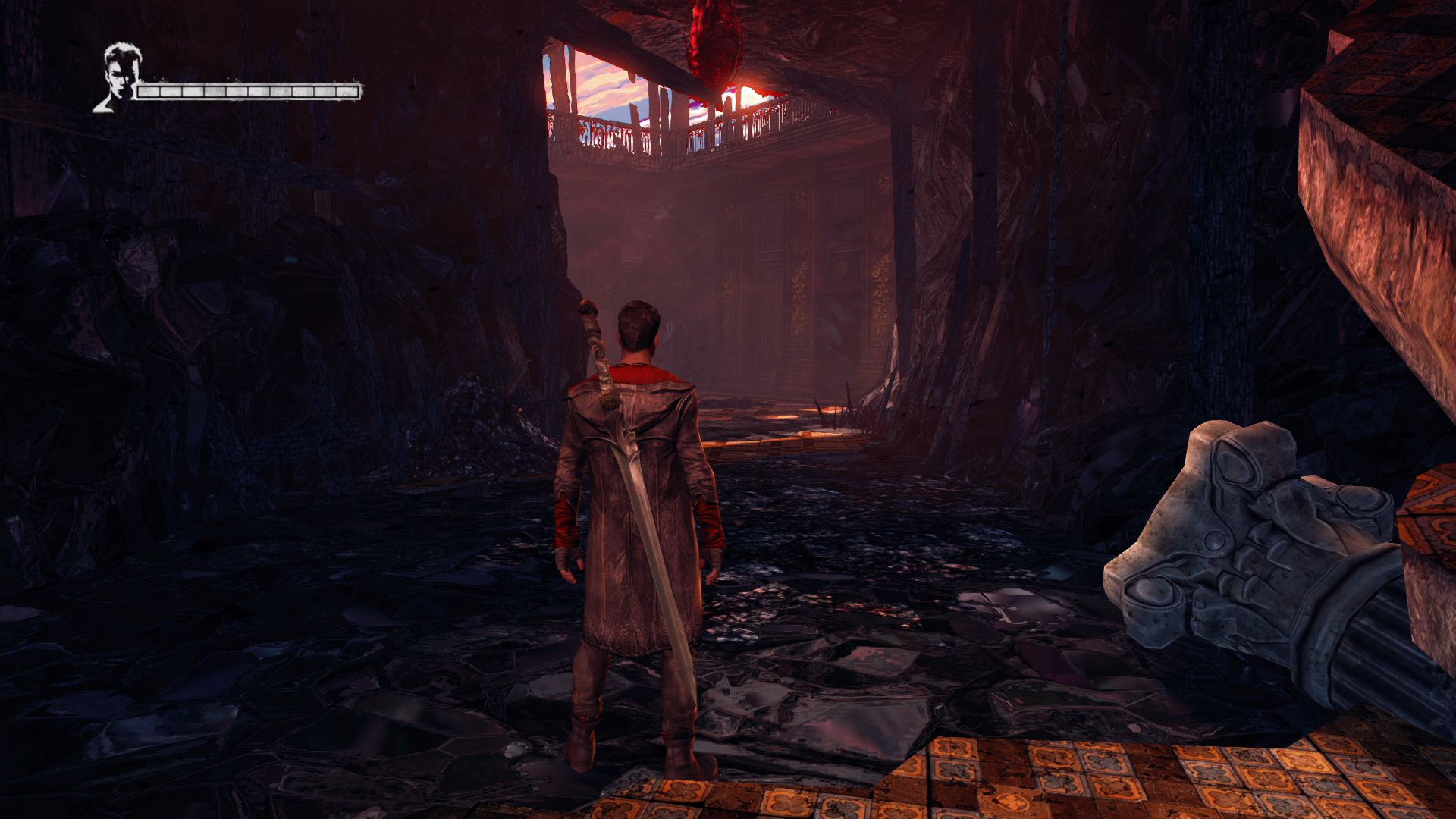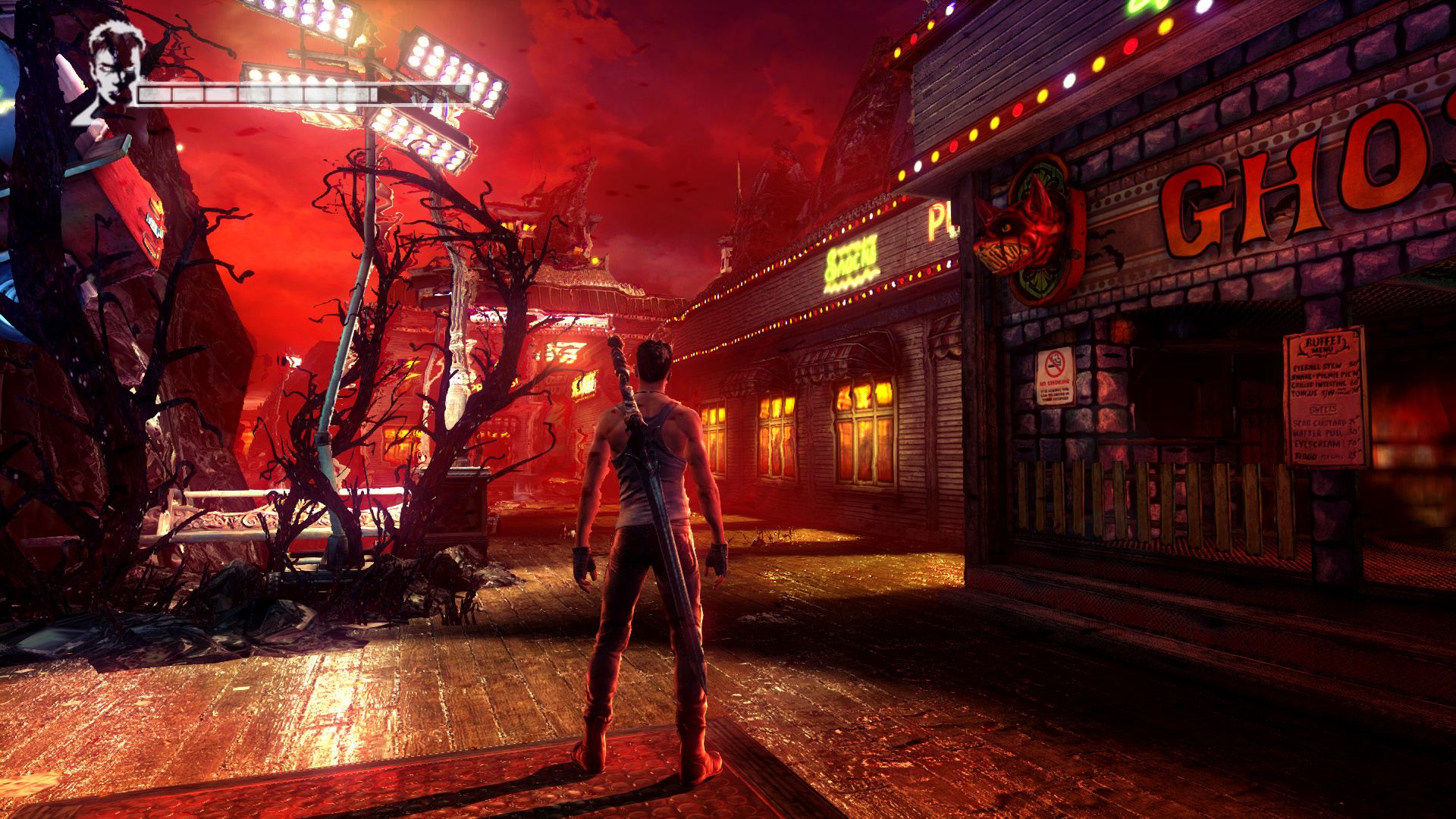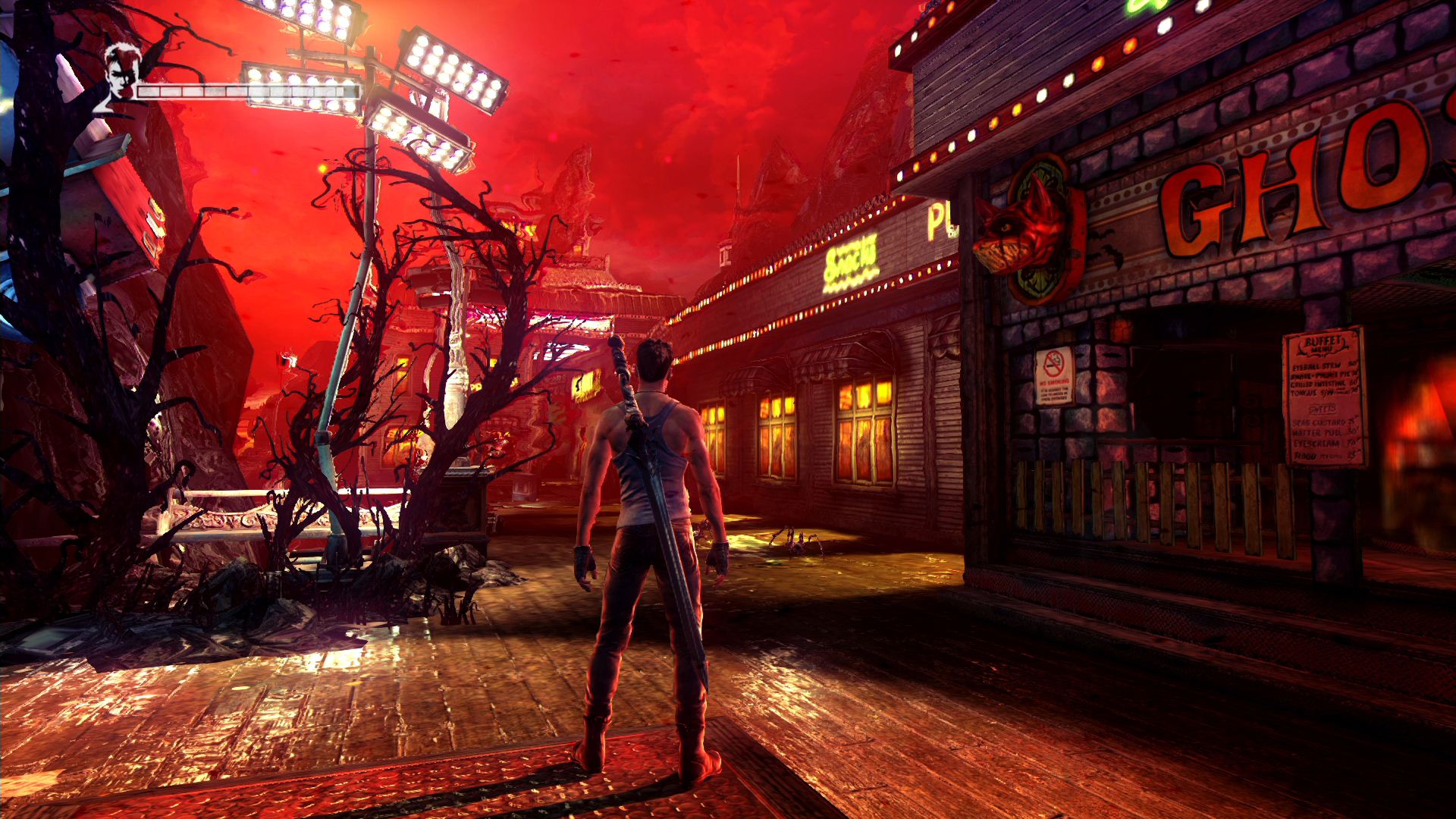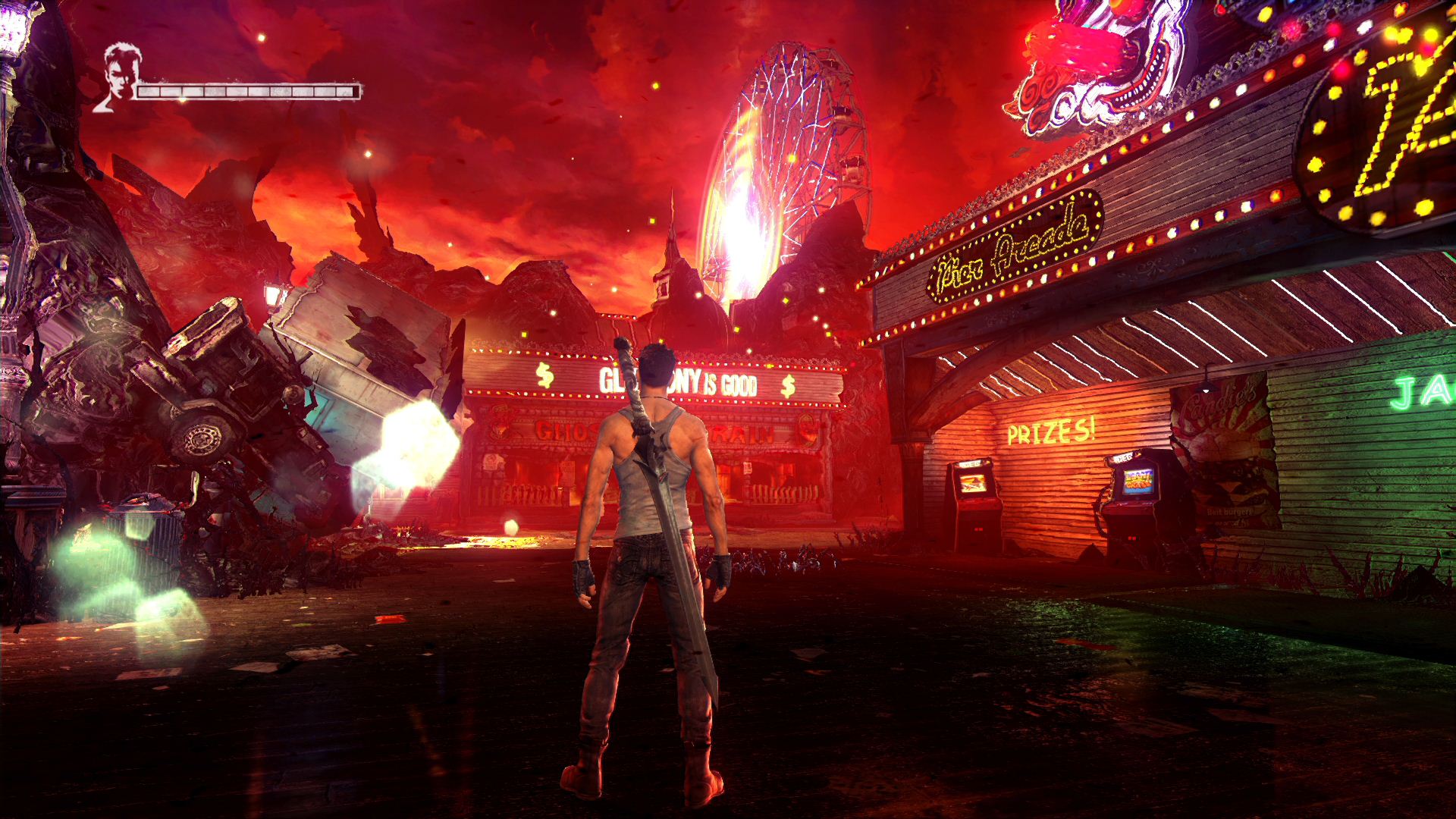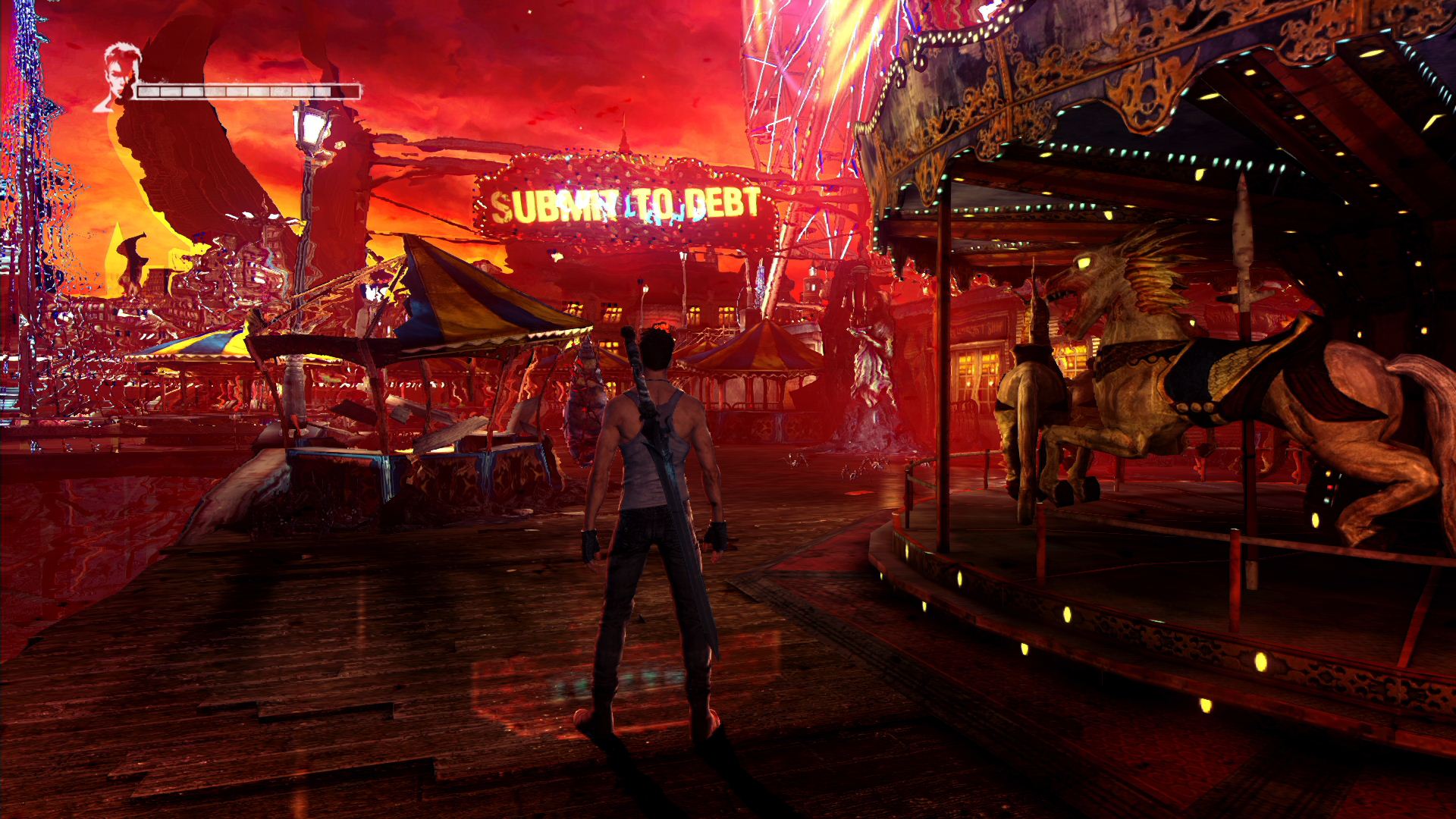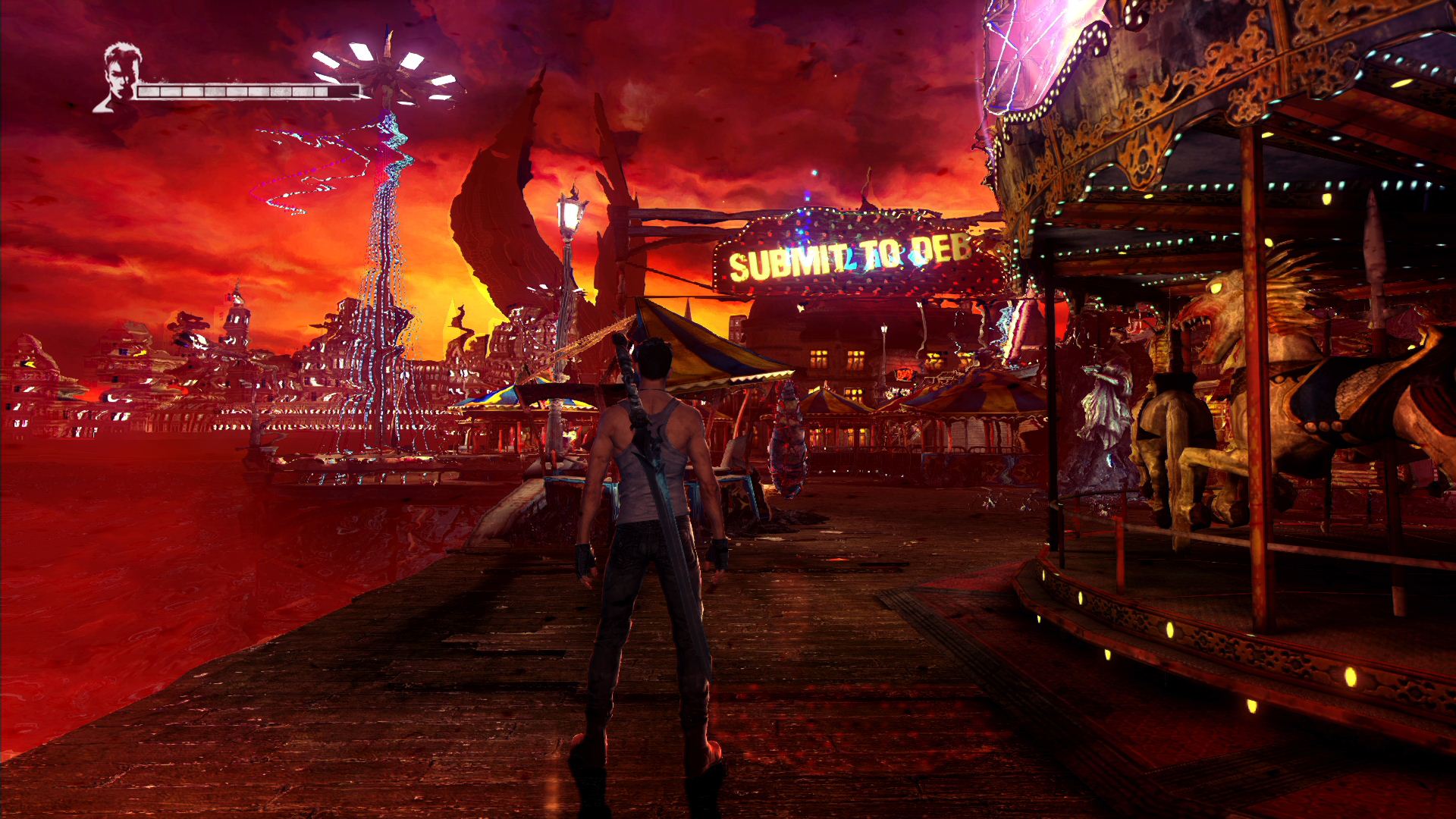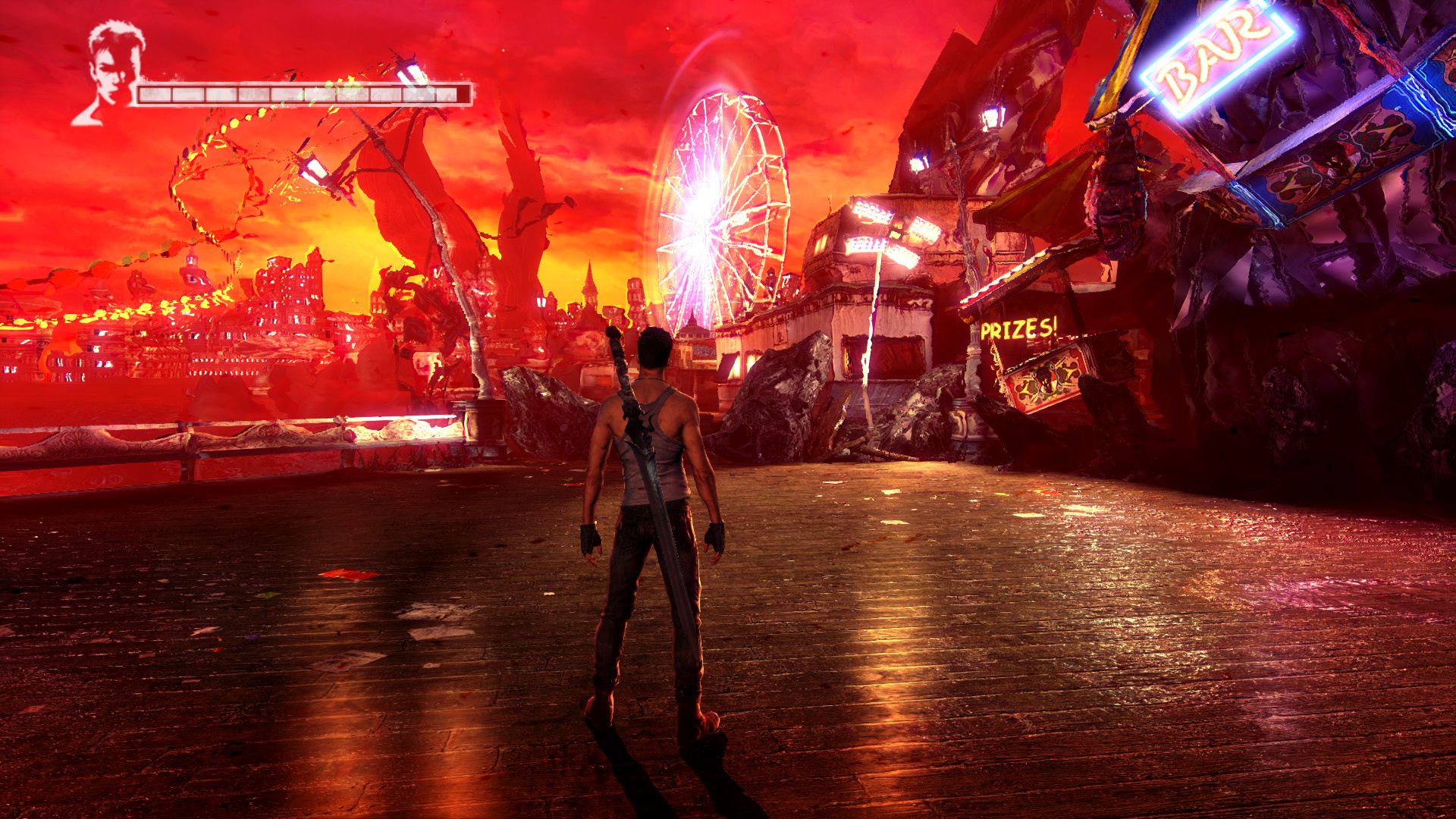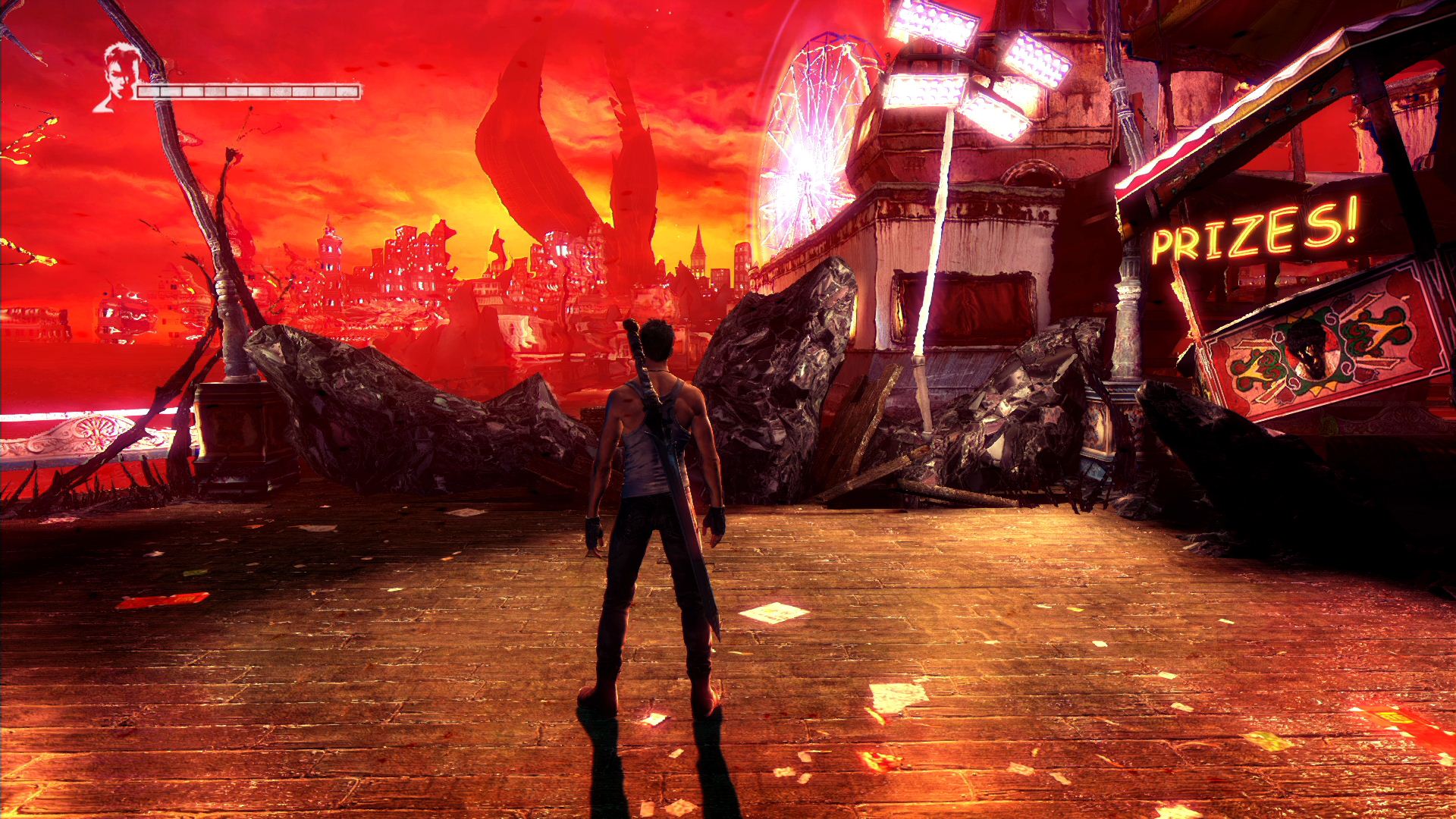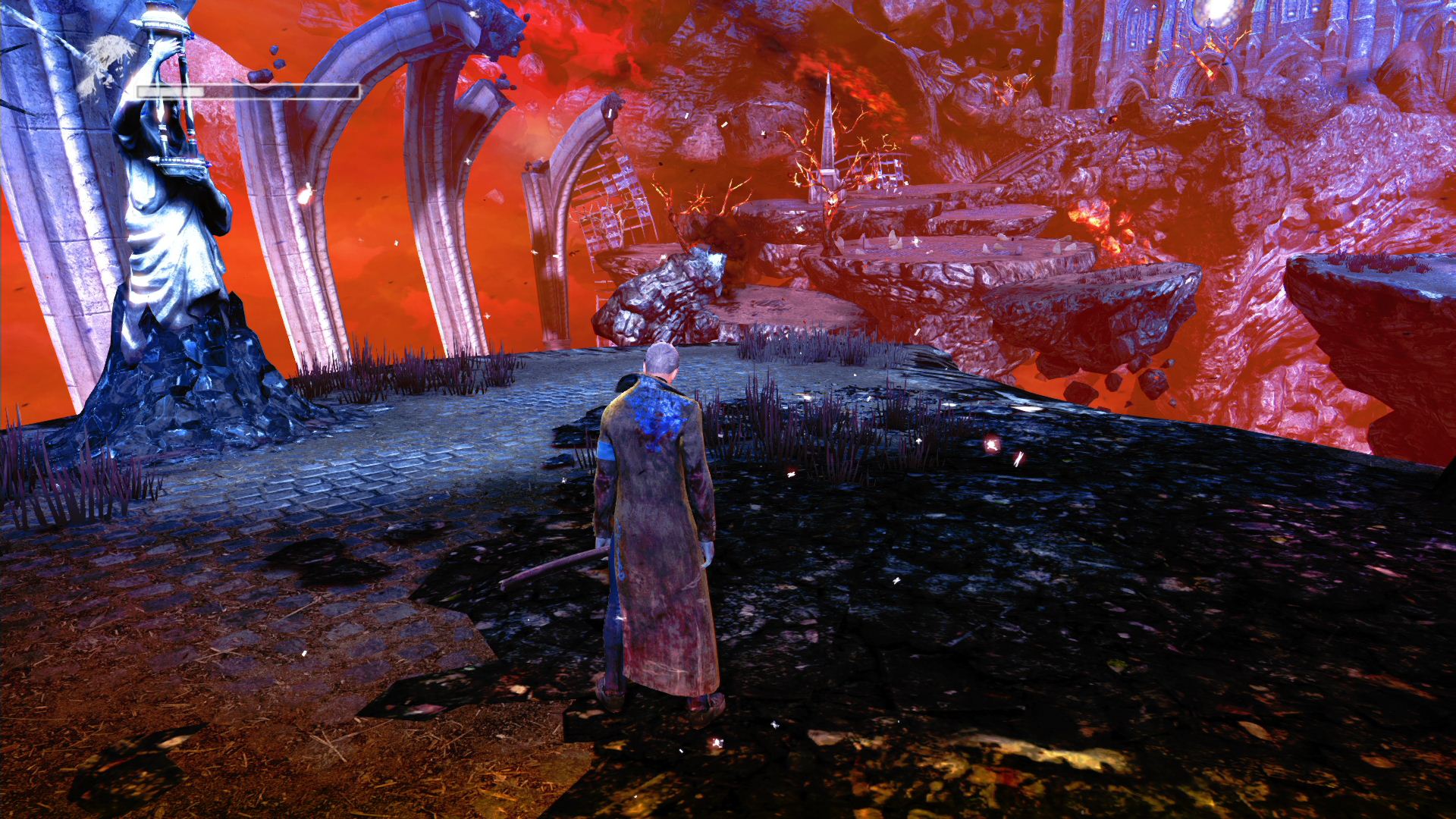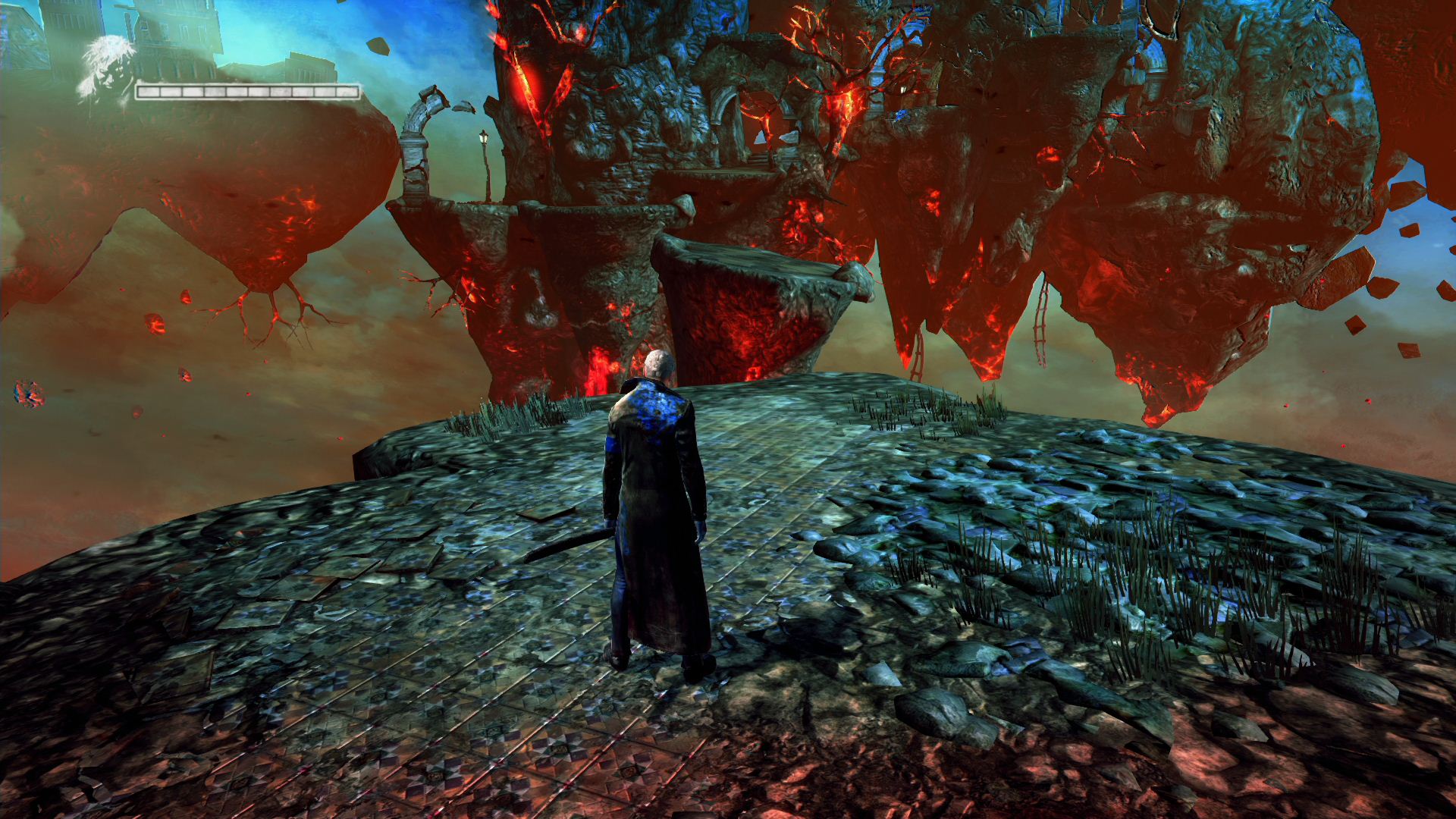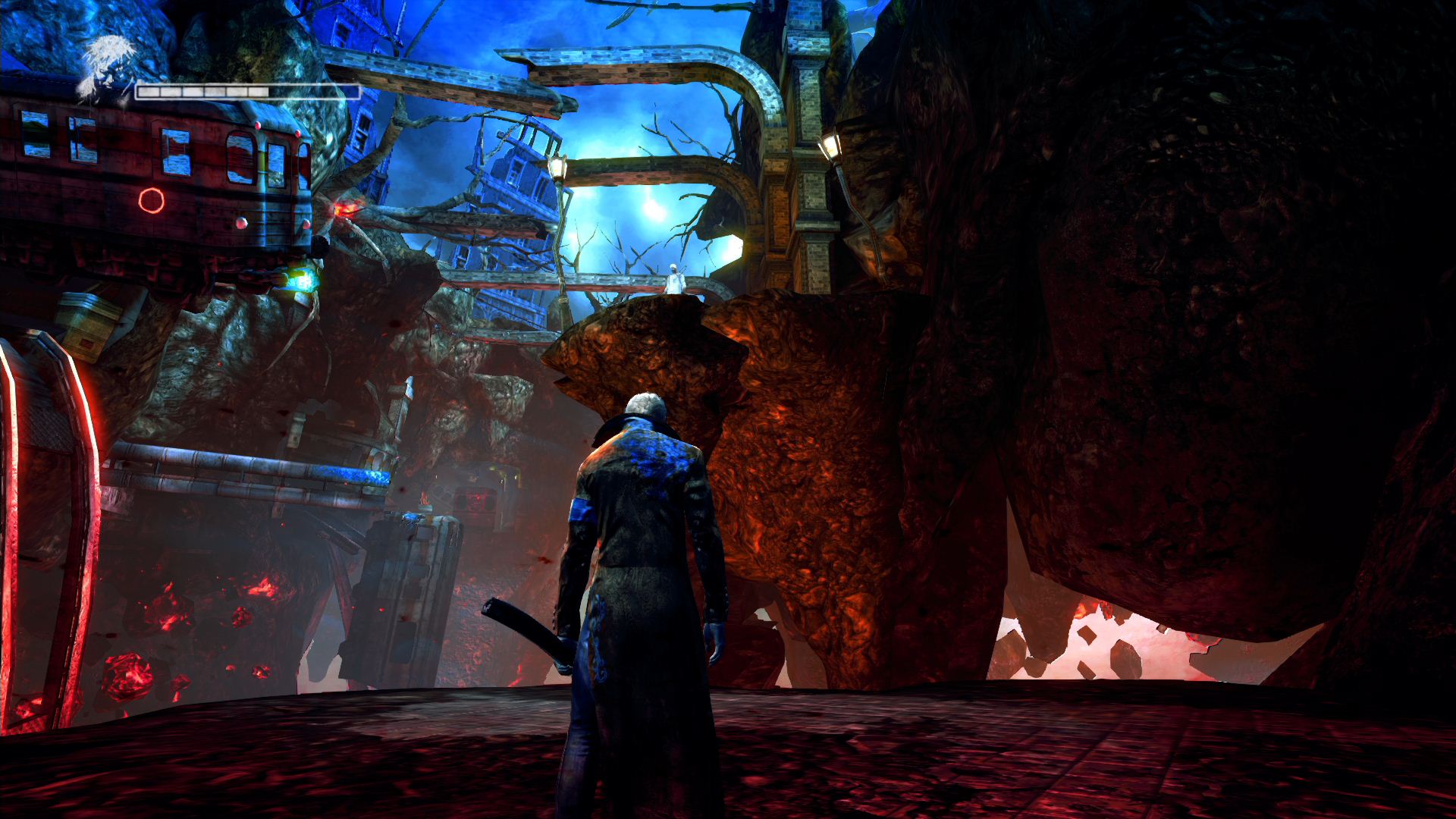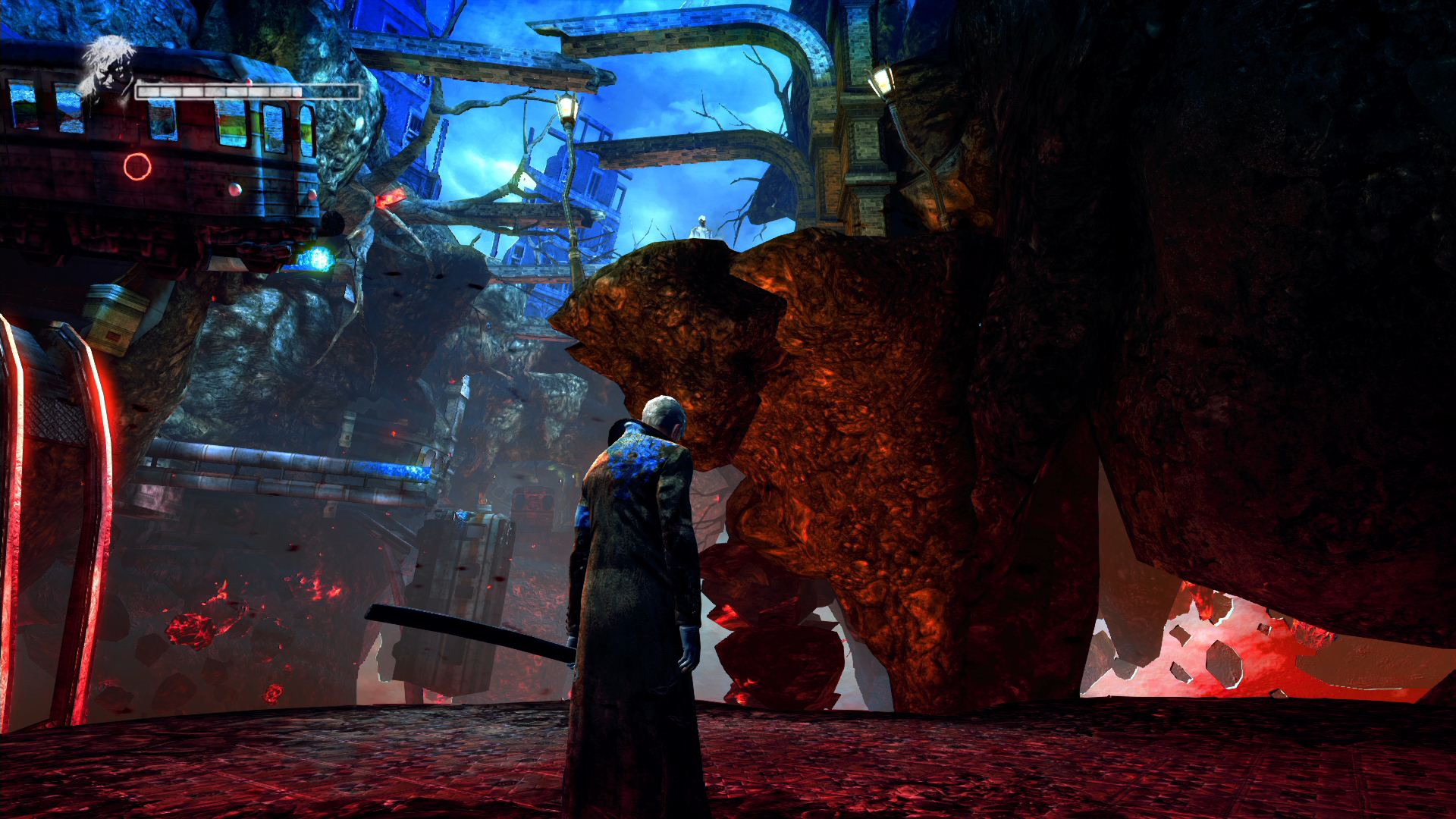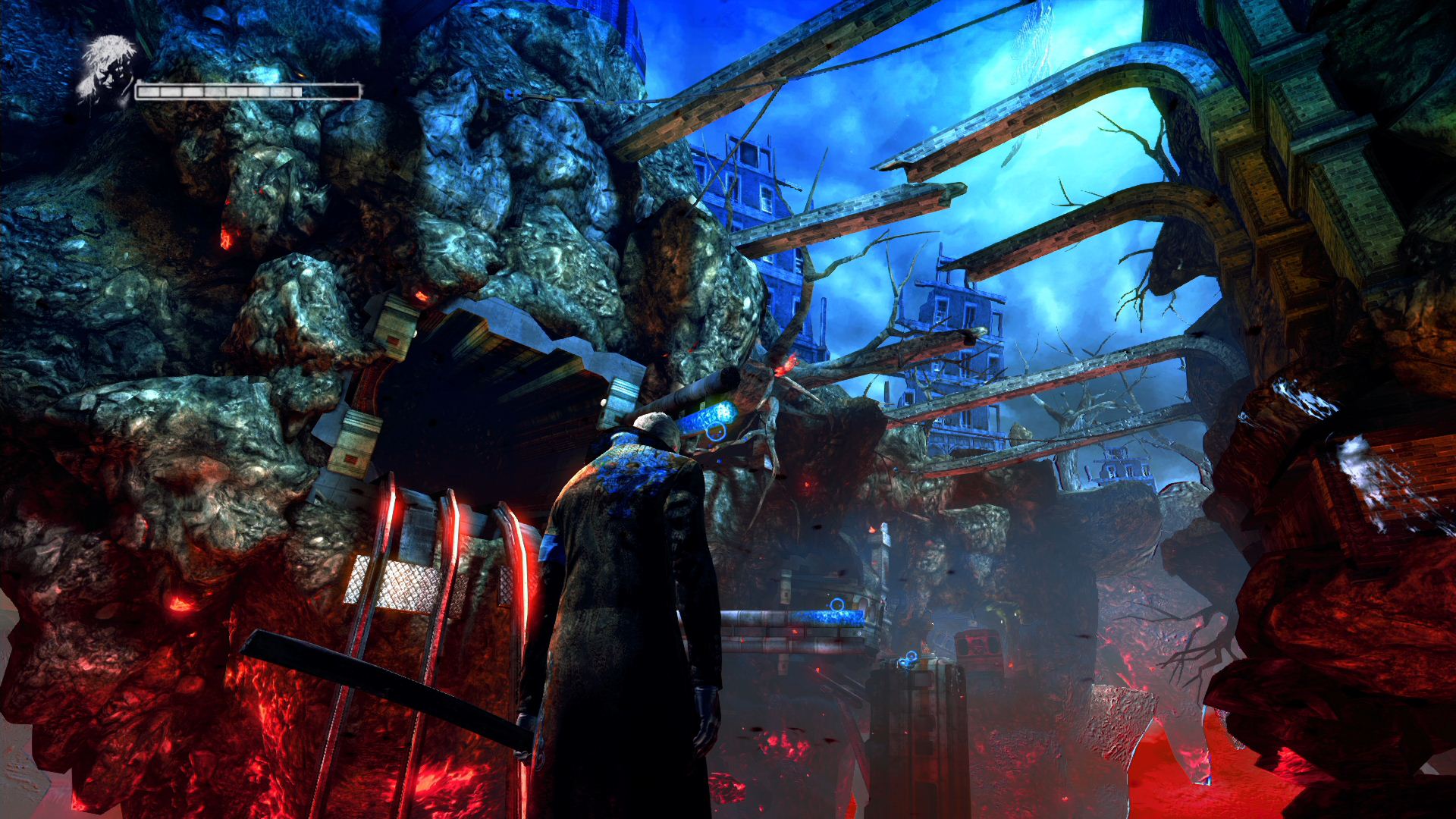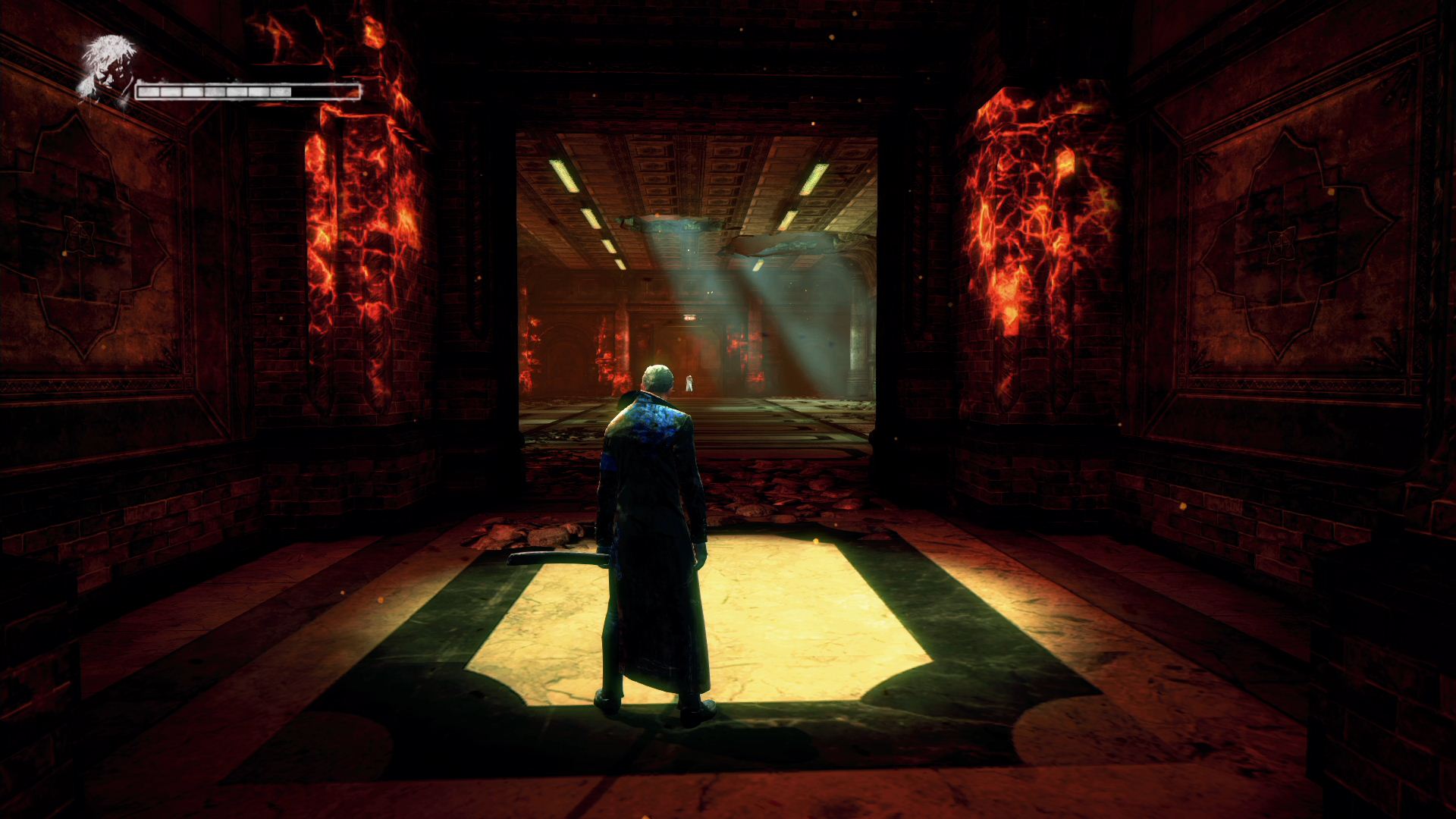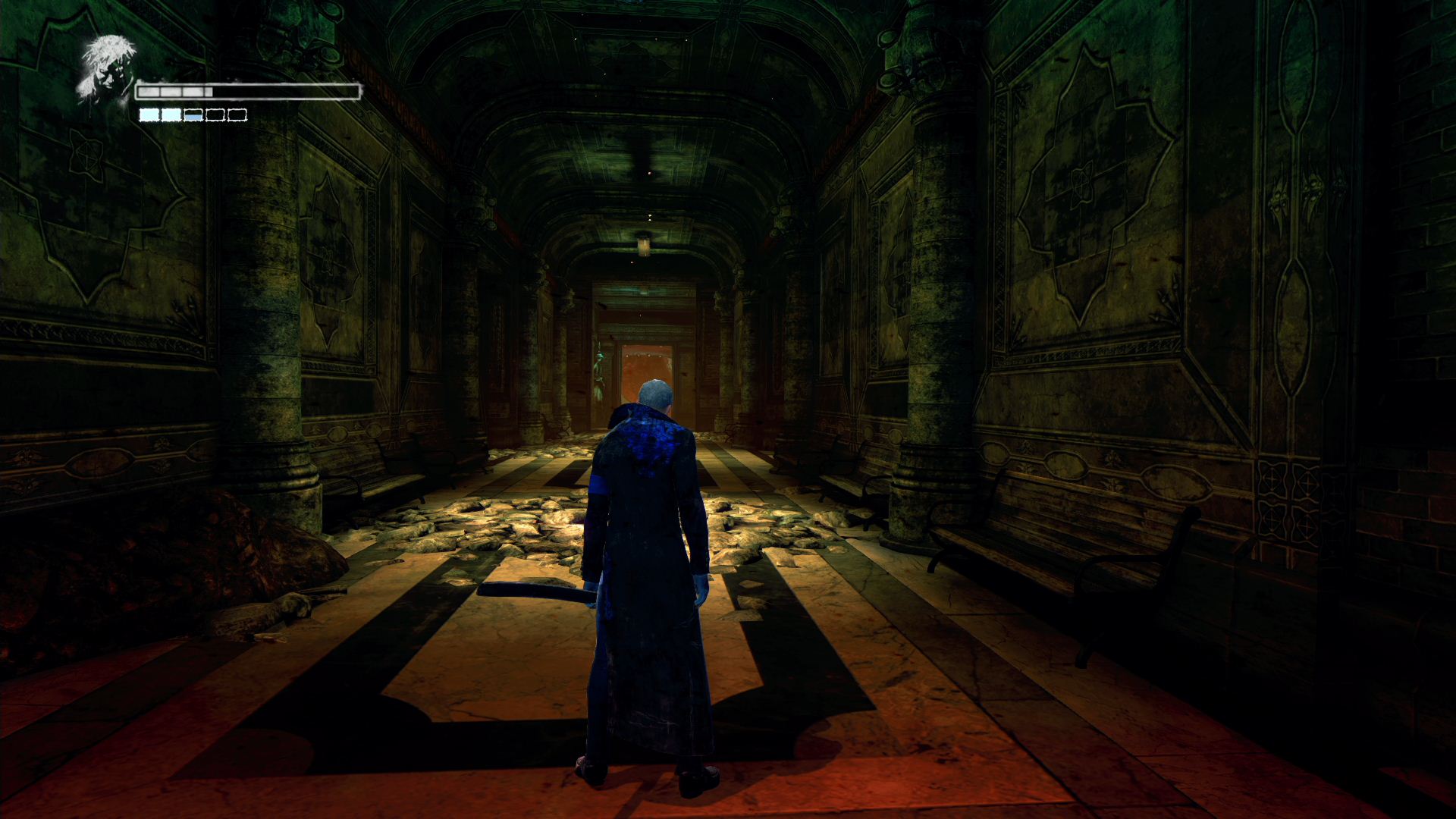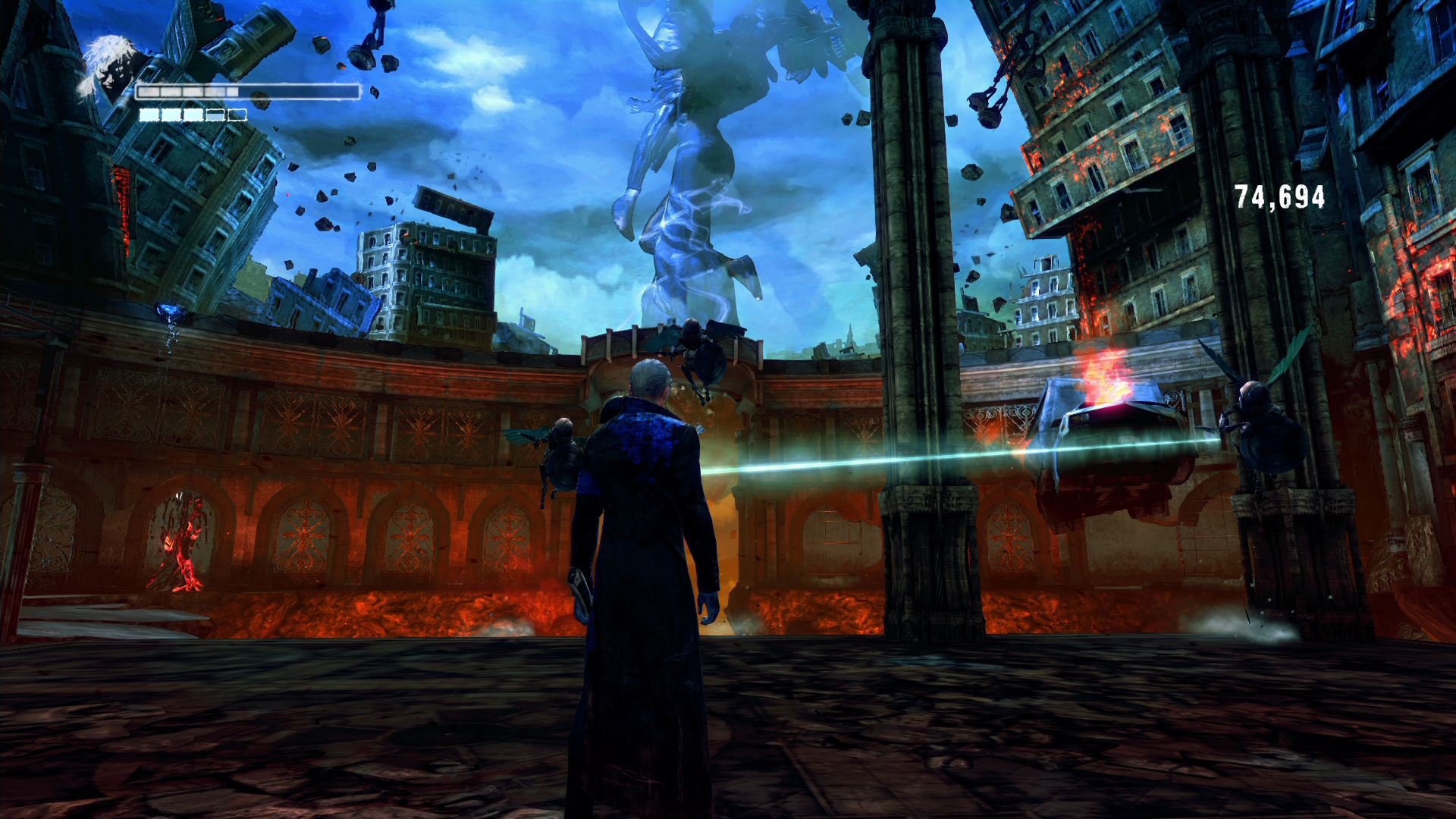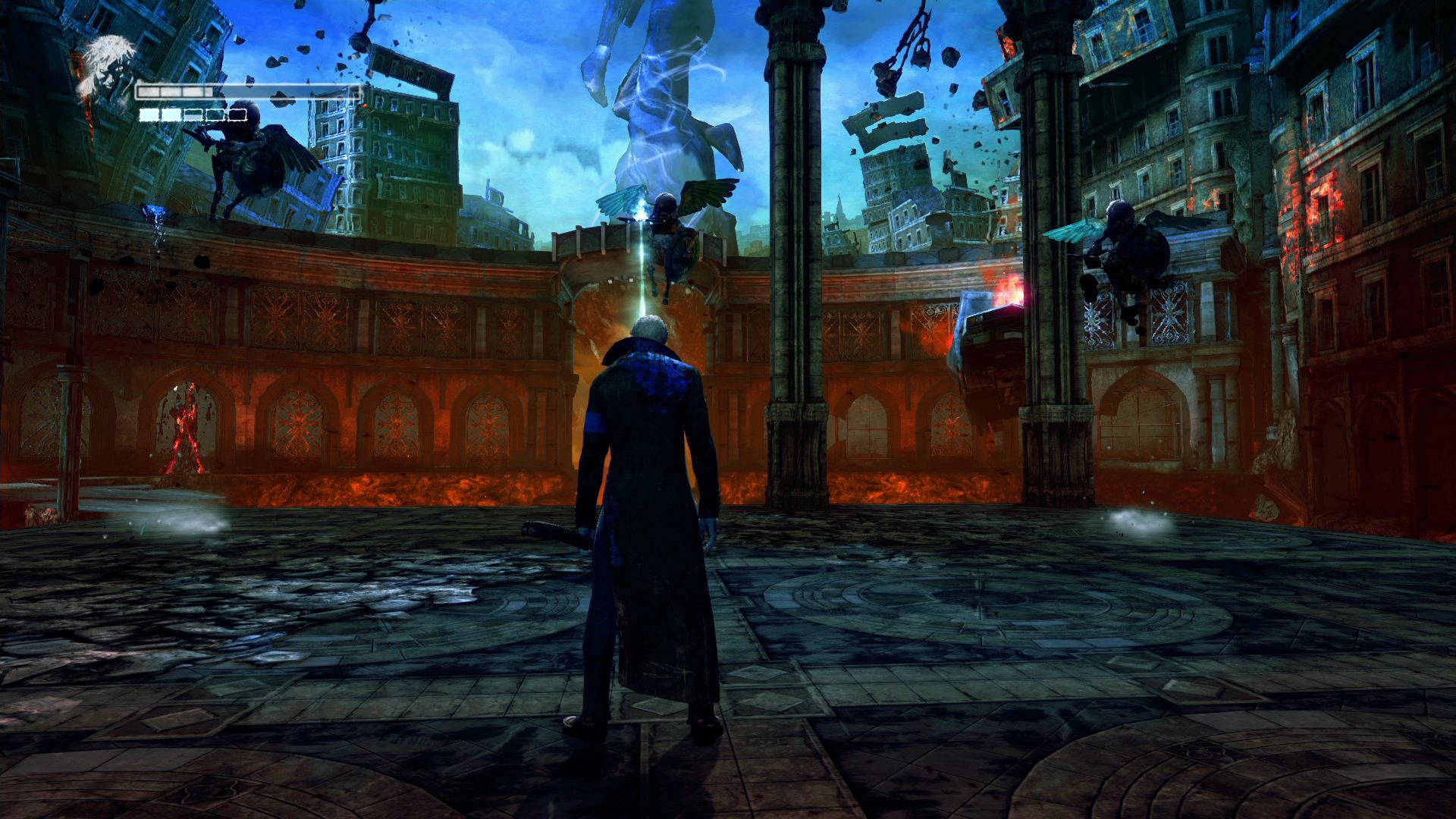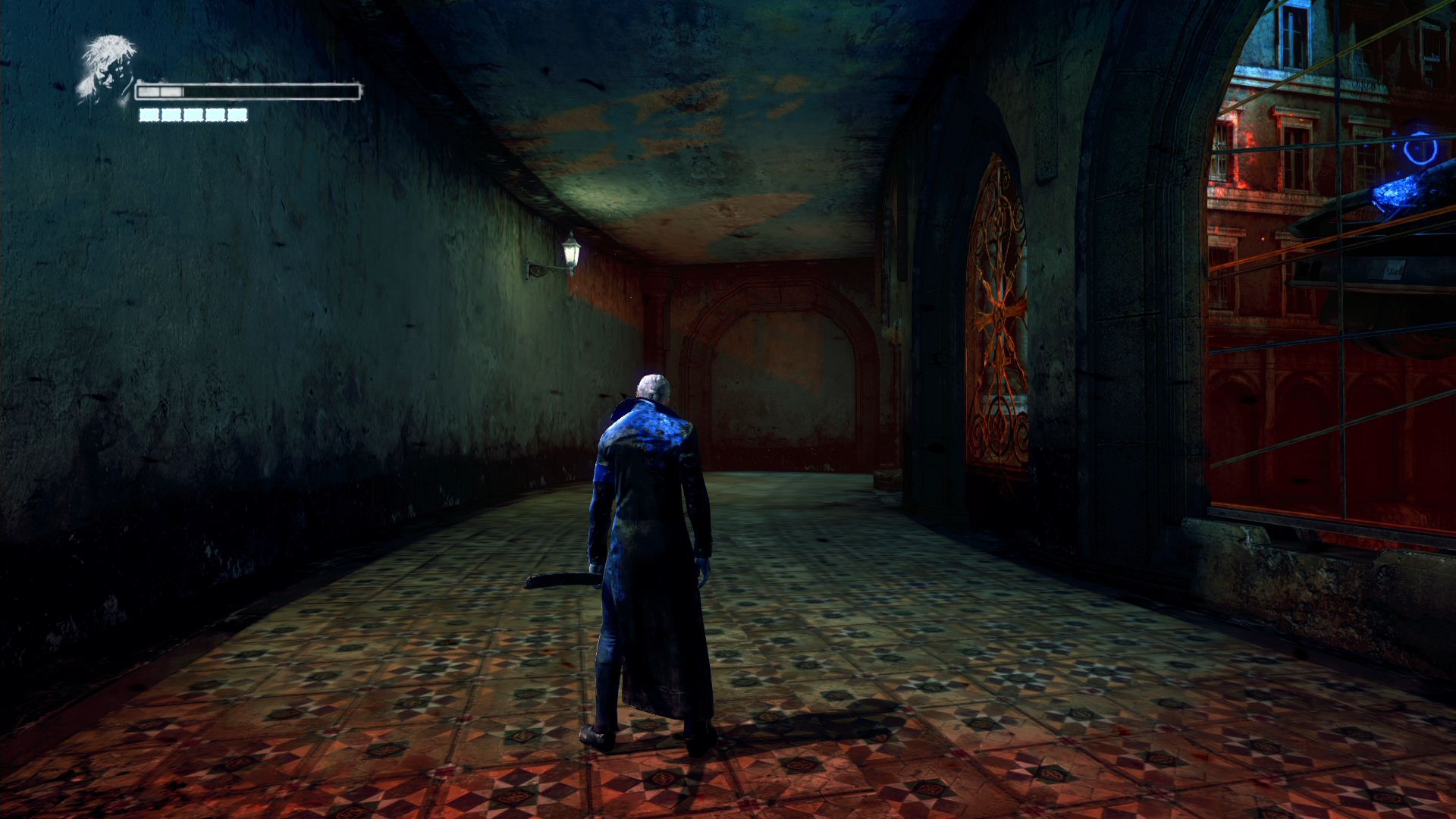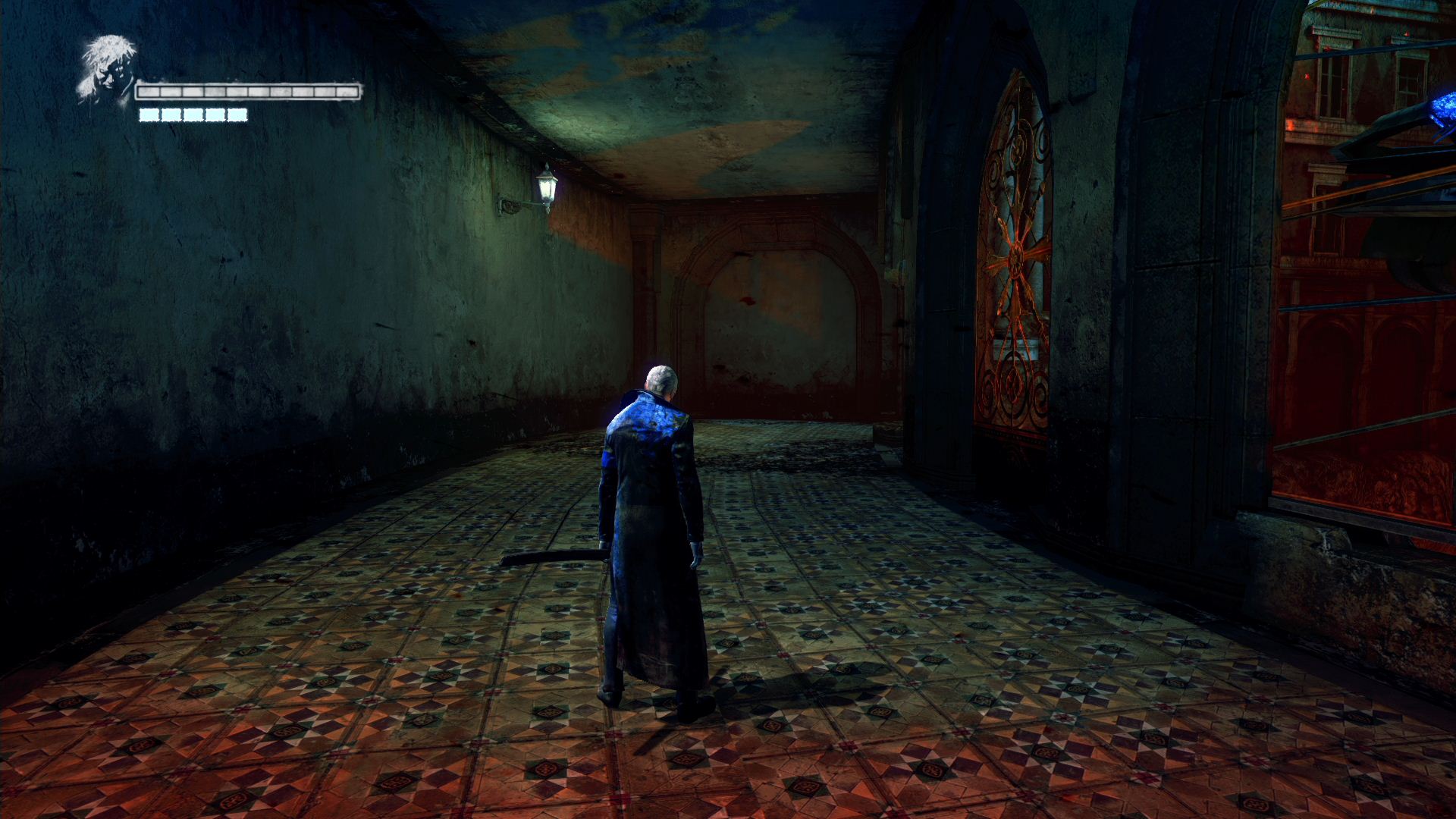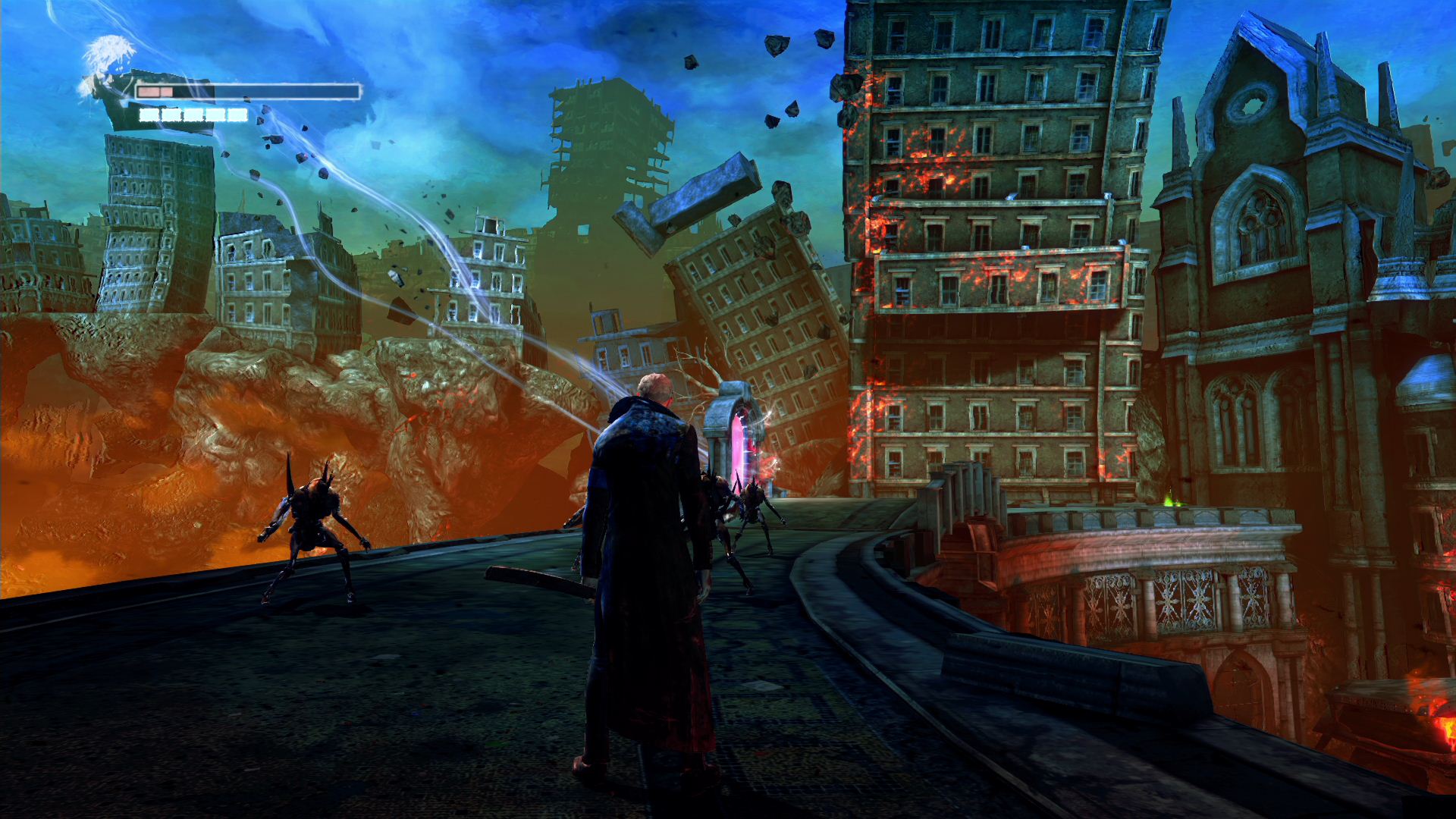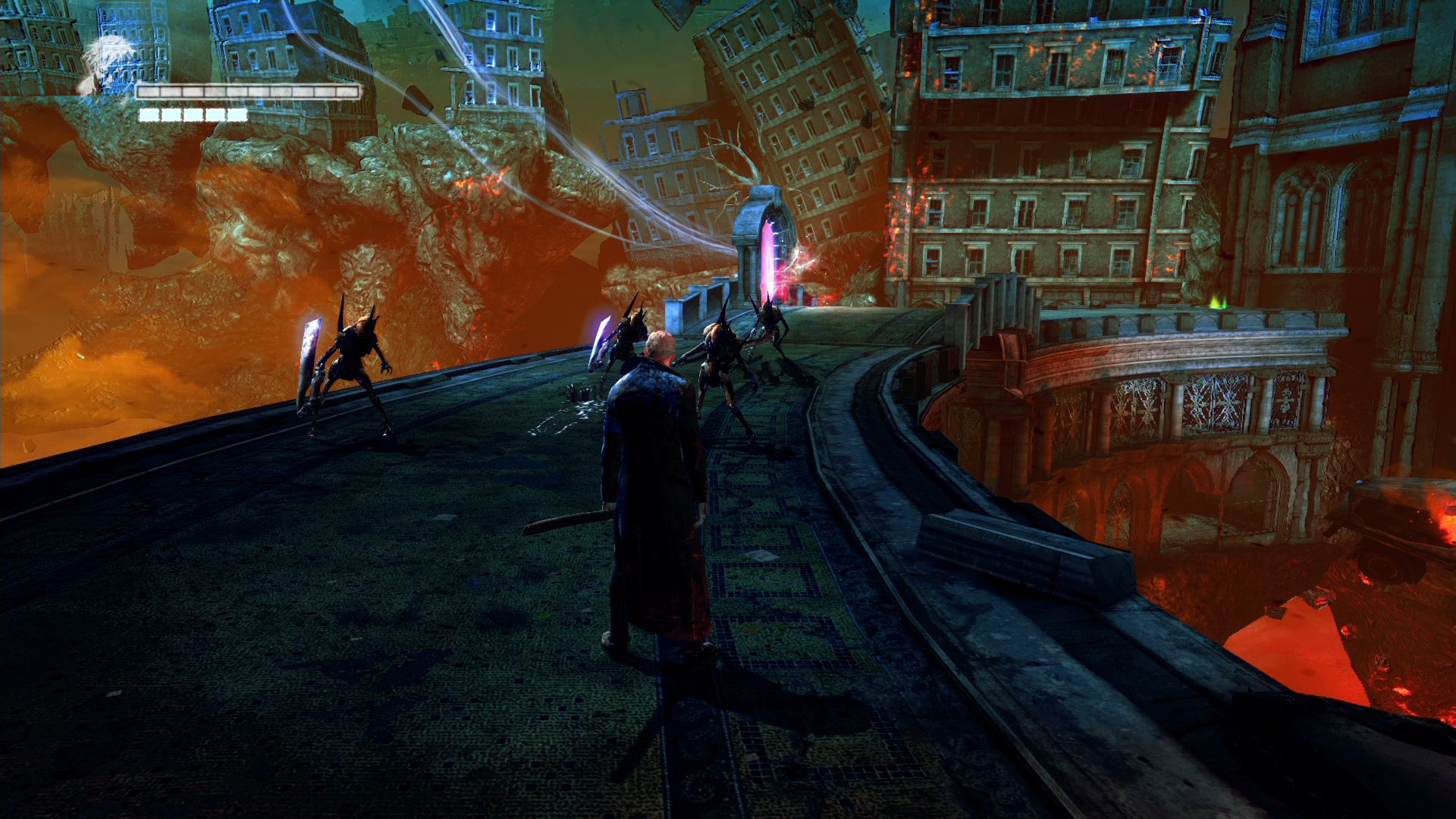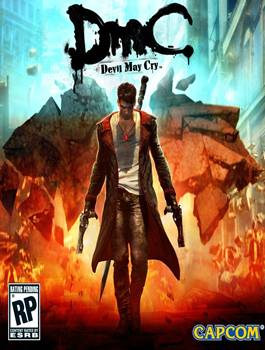
DmC: Devil May Cry will go down as one of the most criminally under-appreciated hack and slash titles of all time, mostly due to the backlash surrounding Dante’s new look (the momentum of which spawned a petition that actually made it all the way to the friggin’ White House). This didn’t sully the critical acclaim the game received, though sales were less than amazing. In this era of remasters and ports, where every developer is bringing their most recent Xbox 360/PS3 titles to the current generation of hardware, it only makes sense that there would be a DmC: Definitive Edition.
First, some back story – DmC actually had a remastered edition of sorts with the PC version, handled by QLOC. The port was famous for its wide range of graphical options and scalability, allowing even those with a mid-range PC to observe the magic of Devil May Cry in 1080p and 60 FPS. Most developers would have been fine with this port and brought it over to the PS4 and Xbox One wholesale but not Capcom.
Head to head comparison between PS4, Xbox One and PC versions of DMC: Devil May Cry. Please select 1080p and 60fps for best possible quality.
Head to head comparison between PS4 and Xbox One versions of Vergil’s Downfall DLC. Please select 1080p and 60fps for best possible quality.
QLOC has been tapped once again to handle the transition of DmC: Devil May Cry to the current generation. Much of the PC art and audio has been utilized and Capcom has further built off of feedback from the PC community. The benefits of current hardware are immediately noticeable with the game’s frame rate jumping from 30 FPS and a resolution of 720p to 60 frames per second and 1080p resolution. Producer Rey Jimenez clarified in a recent interview with GamingBolt that the frame rate isn’t locked at 60 FPS but if you’re going for that standard, this is the way to do it.
We observed some frame rate drops in playing through the first few hours of the campaign and Vergil’s Downfall but these were incredibly few and far between. The drops are fairly miniscule as well, with the average frame on the PS4 coming in at 55 frames per second while the Xbox One is 57 frames per second. Keep in mind that DmC: Definitive Edition is still on Unreal Engine 3 but running on platforms meant for Unreal Engine 4.
So unlike, say, Resident Evil: Revelations 2, Ninja Theory and in this case QLOC has found a way to properly scale its framework with minimal differences between the current gen platforms. One great example is in the cut-scenes which ran at a higher frame rate on the Xbox 360 and PS3 as opposed to the 30 FPS gameplay, resulting in odd judders after transitions. The frame rate is 60 FPS all around on PS4 and Xbox One so said judders are now gone. Even the motion blur on cut-scenes actually looks cleaner and actually conveys the sense of distortion the previous gen versions were going for.
DmC: Definitive Edition also provides a great tool for measuring the graphical potential of the PS4 and Xbox One. Along with a good number of enemies on screen, the action is fast and furious with a fairly large scale to its world. Both versions are similar to the PC version’s High settings but improve on the same in various ways. Character shadows are higher resolution, lighting effects are better and texture geometry has been improved. The post-process anti-aliasing does cause jaggies but it’s excellent otherwise, keeping shadows sharp throughout.
The AA on buildings in previous gen releases caused artifacting but that’s also been removed. And yes, the texture streaming and image quality issues seen on the PS3 version have been rendered null and void. There’s a strong parity between the Xbox One and PS4 releases and this is especially interesting when the latter is often considered the more powerful platform. Nonetheless, if Resident Evil: Revelations 2 highlighted the discrepancies between both platforms, then DmC: Definitive Edition is the perfect example of optimization.
Head to head comparison beginning with PC followed by PS4 and Xbox One.
Head to head comparison beginning with PS4 followed by Xbox One.
However, continuing the trend, DmC: Definitive Edition has better anisotropic filtering on the Xbox One than the PS4. Many recent third party releases in recent times have skipped implementing AF altogether on the PS4 so at least it’s here. QLOC further played up the game’s colourful art style with soft shadows, better particle effects and a smart utilization of screen space reflections. There isn’t much else new when it comes to animations or increased enemy count. One may wonder if DmC: Definitive Edition isn’t a bit late, perhaps by a year. Personally, I’ll take a strongly optimized remaster releasing two years after the initial version over a cross-generational debacle or a port that hardly takes any risks.
Conclusion:
QLOC and Capcom pulled off a simple task which most developers have seemingly been struggling with this generation. DmC: Definitive Edition is a remaster that makes no bones about offering a significantly better visual experience than the previous generation, excelling over the PC version in many instances while also offering some new visual flourishes.
Did we mention that the 1080p resolution and 60 FPS frame rate which both look good and magically suffer from no defects? It’s still incredible that Capcom could be so clueless with Resident Evil: Revelations 2 but somehow get it together for a faster-paced release like DmC: Devil May Cry (then again, that’s more of a testament to QLOC’s abilities than anything else).
DmC: Definitive Edition may not offer much by way of gameplay you haven’t seen before – though all of the previously released DLC has been included along with new levels, new difficulty modes and costumes – but that’s the point. It’s supposed to bring DmC: Devil May Cry to the PS4 and Xbox One, offer a few tweaks here and there, some new additions and significantly revamp the visuals without becoming unrecognisable in the process. You can’t really ask for much more in this day and age of quick cash grabs.
The Xbox One version may have a slightly better average frame rate and anisotropic filtering than the PS4 version but both are otherwise identical. Whichever version you decide to pick up, you’ll be assured of a rollicking good time with excellent visuals. And hey, this time you can choose Dante’s classic look from the start, in case that was (unjustifiably) stopping you before.
Note: GamingBolt’s Bill Smith also contributed to this article.








